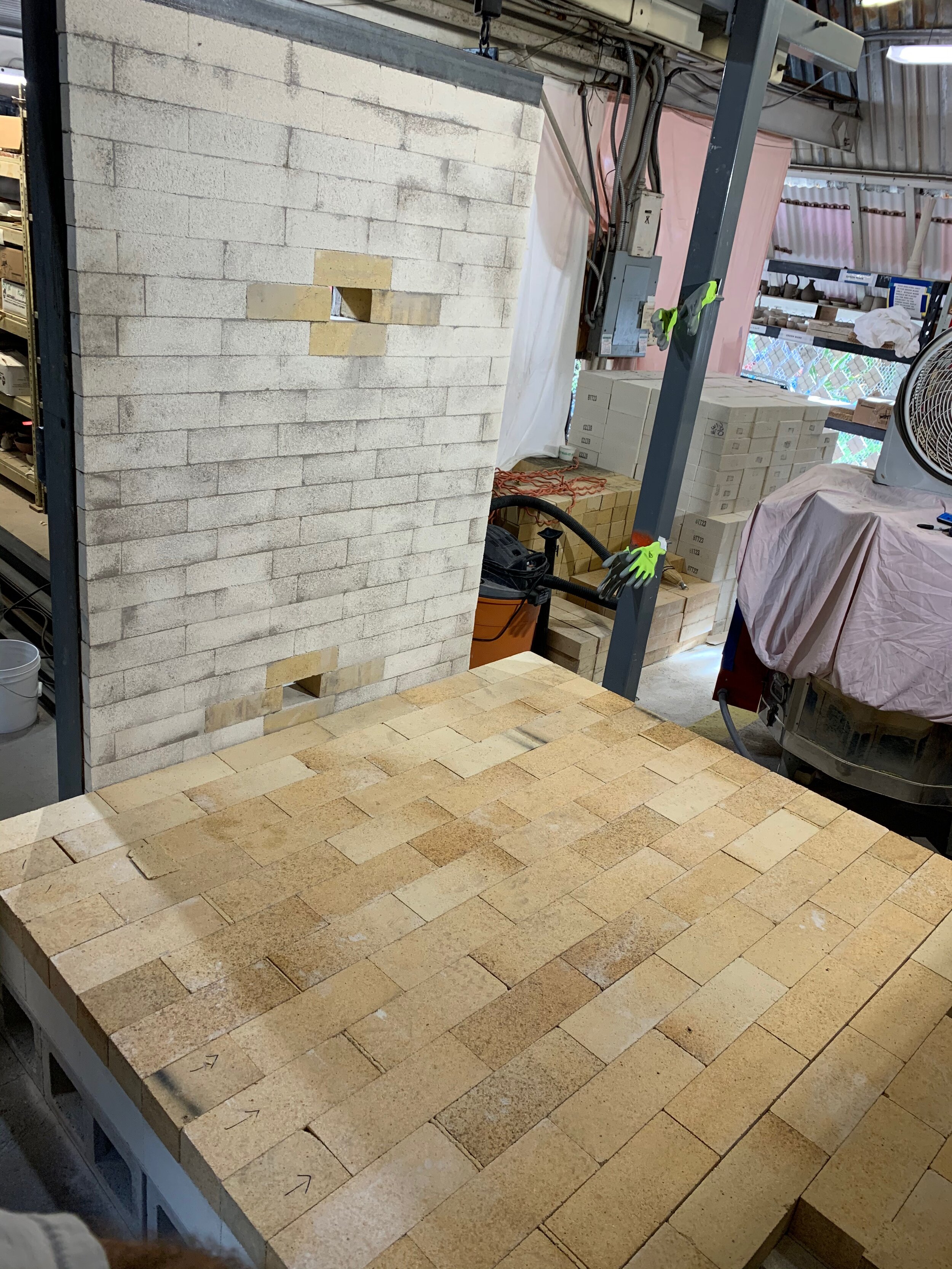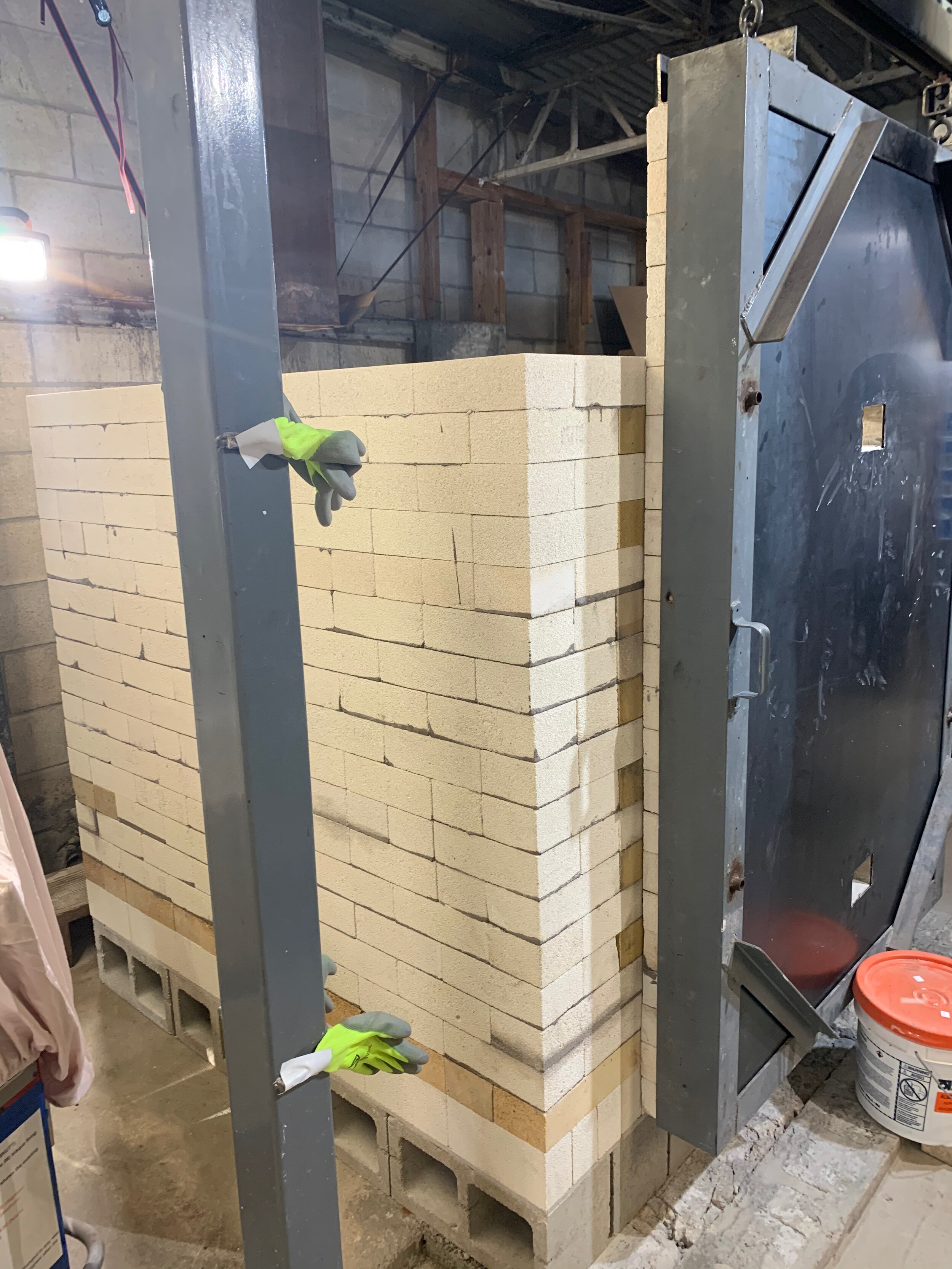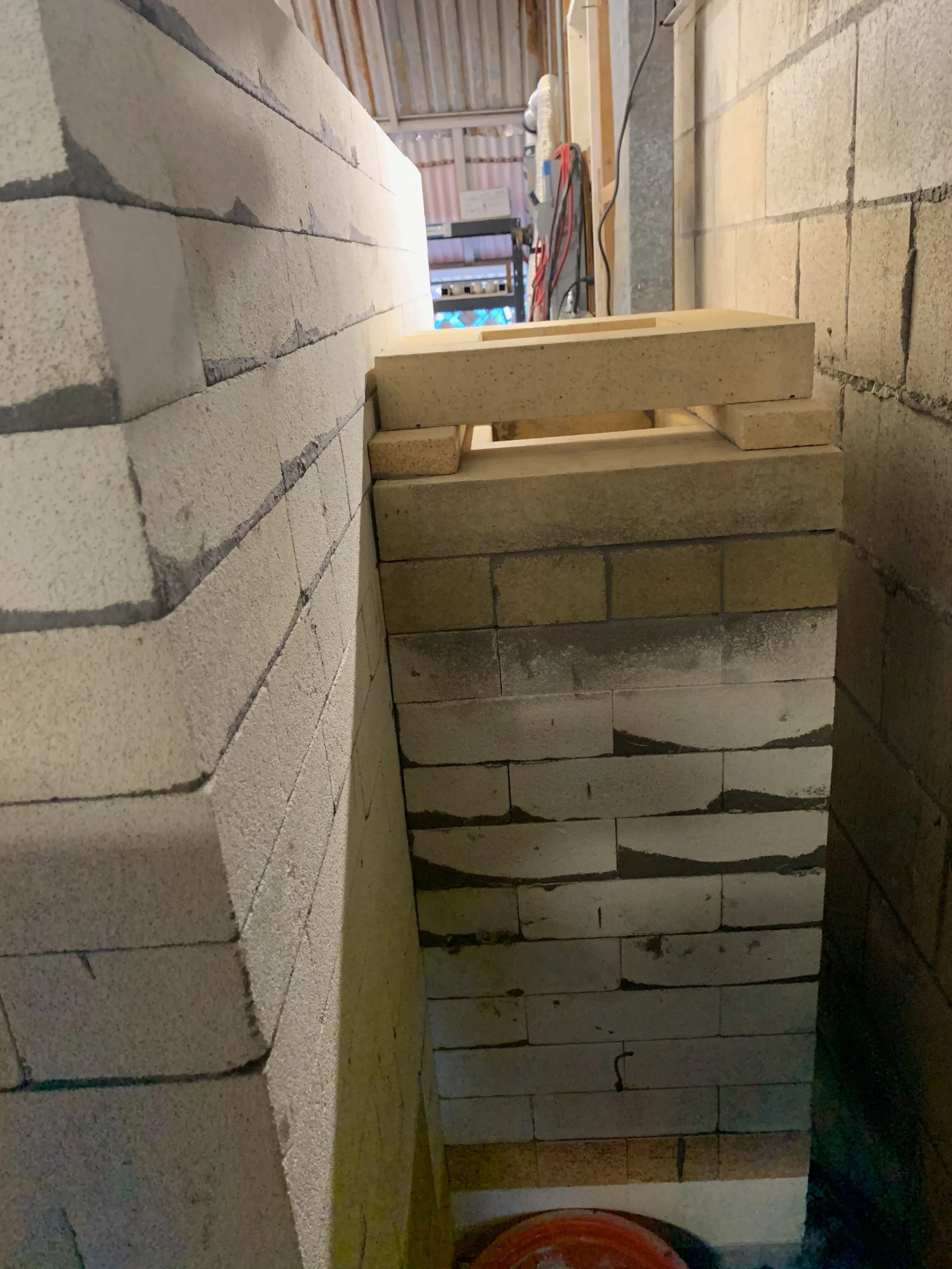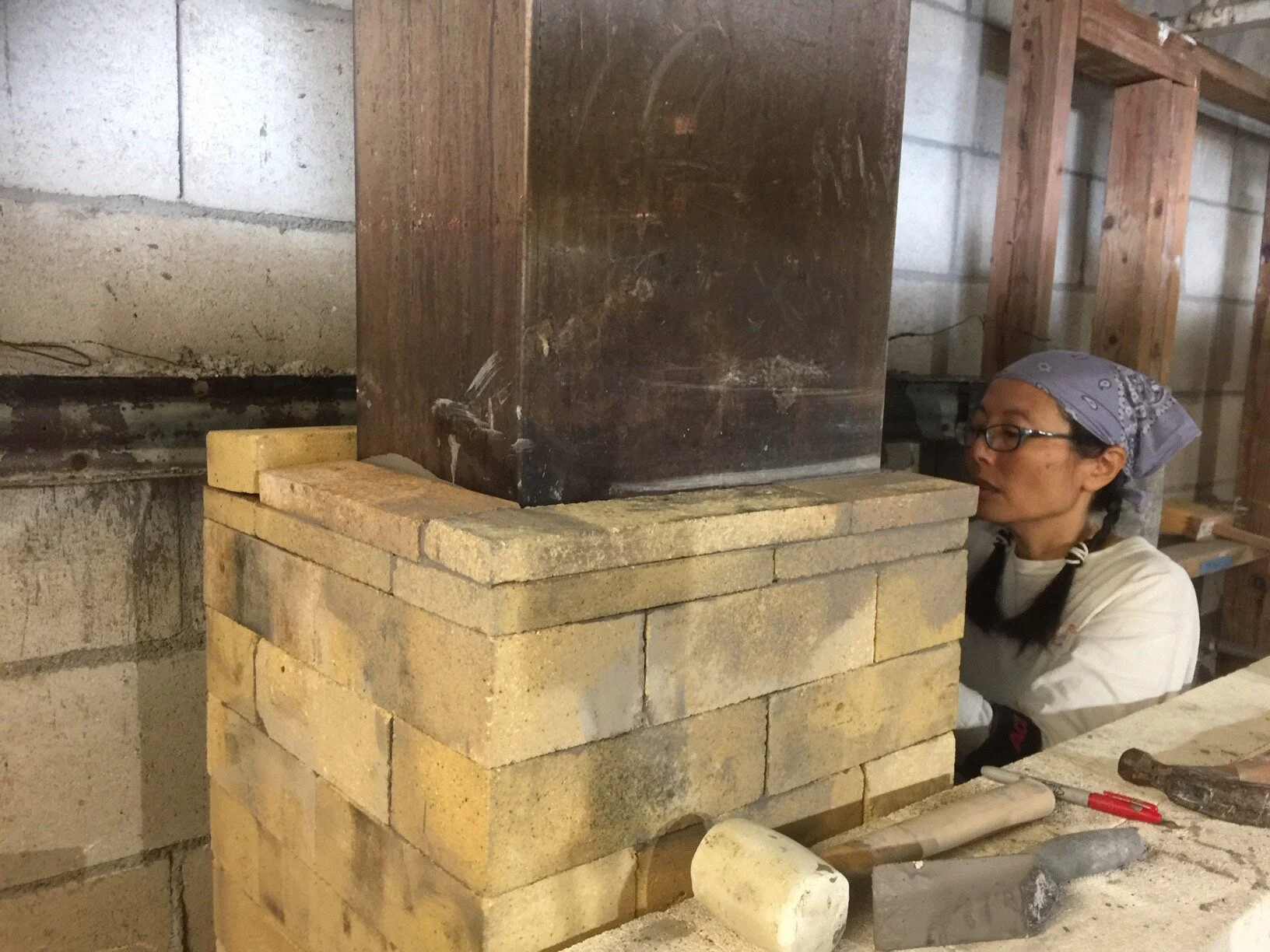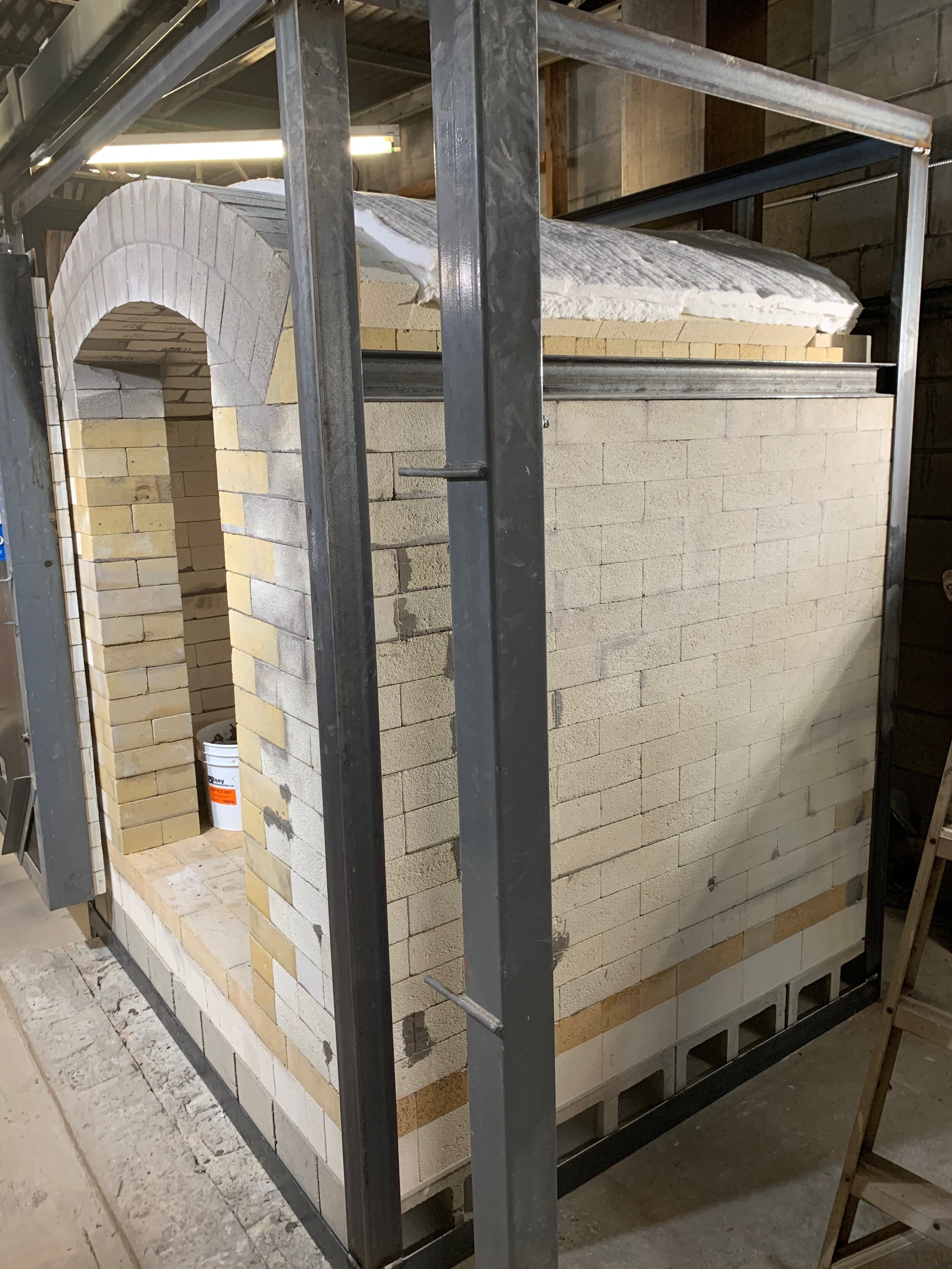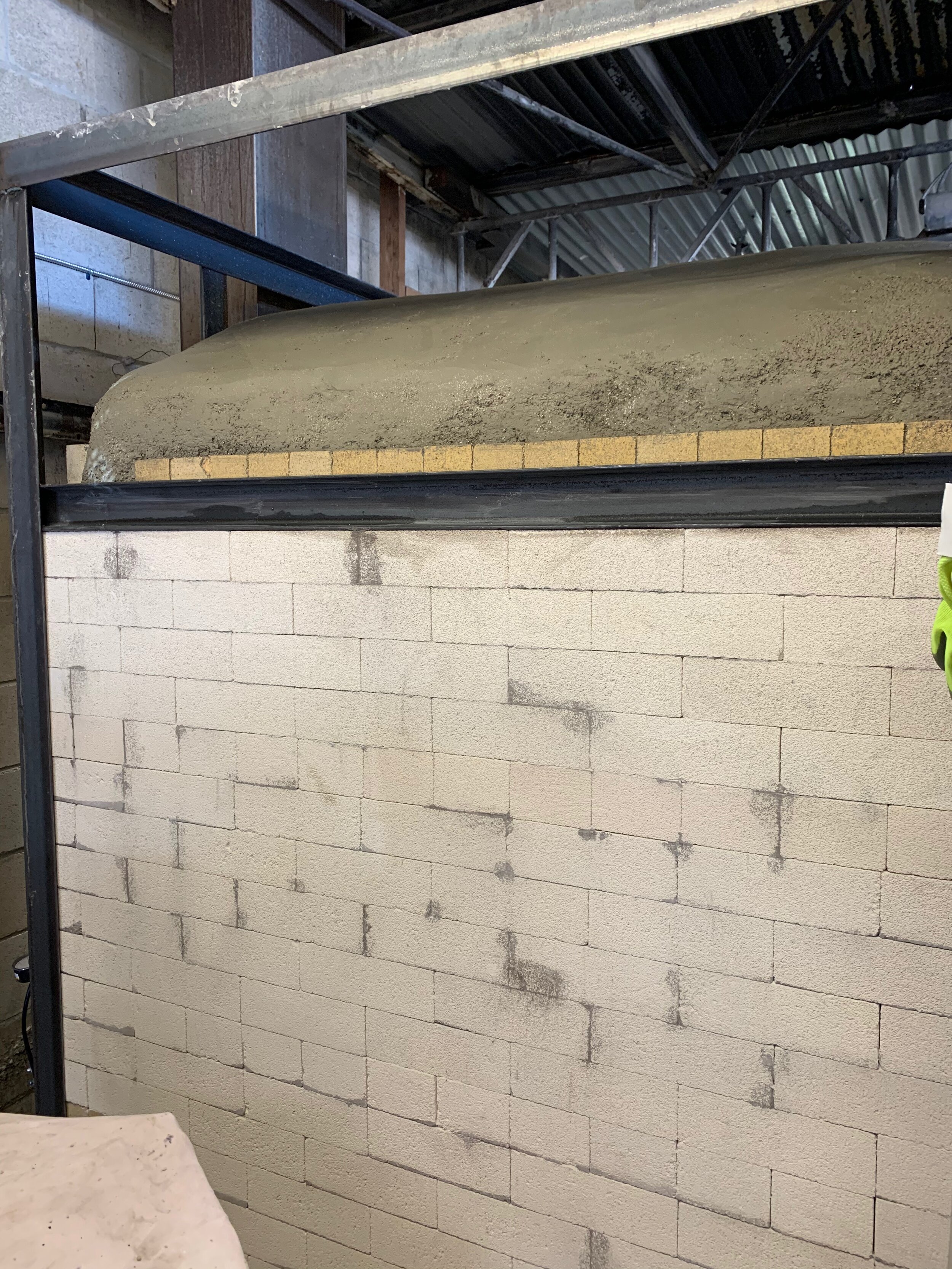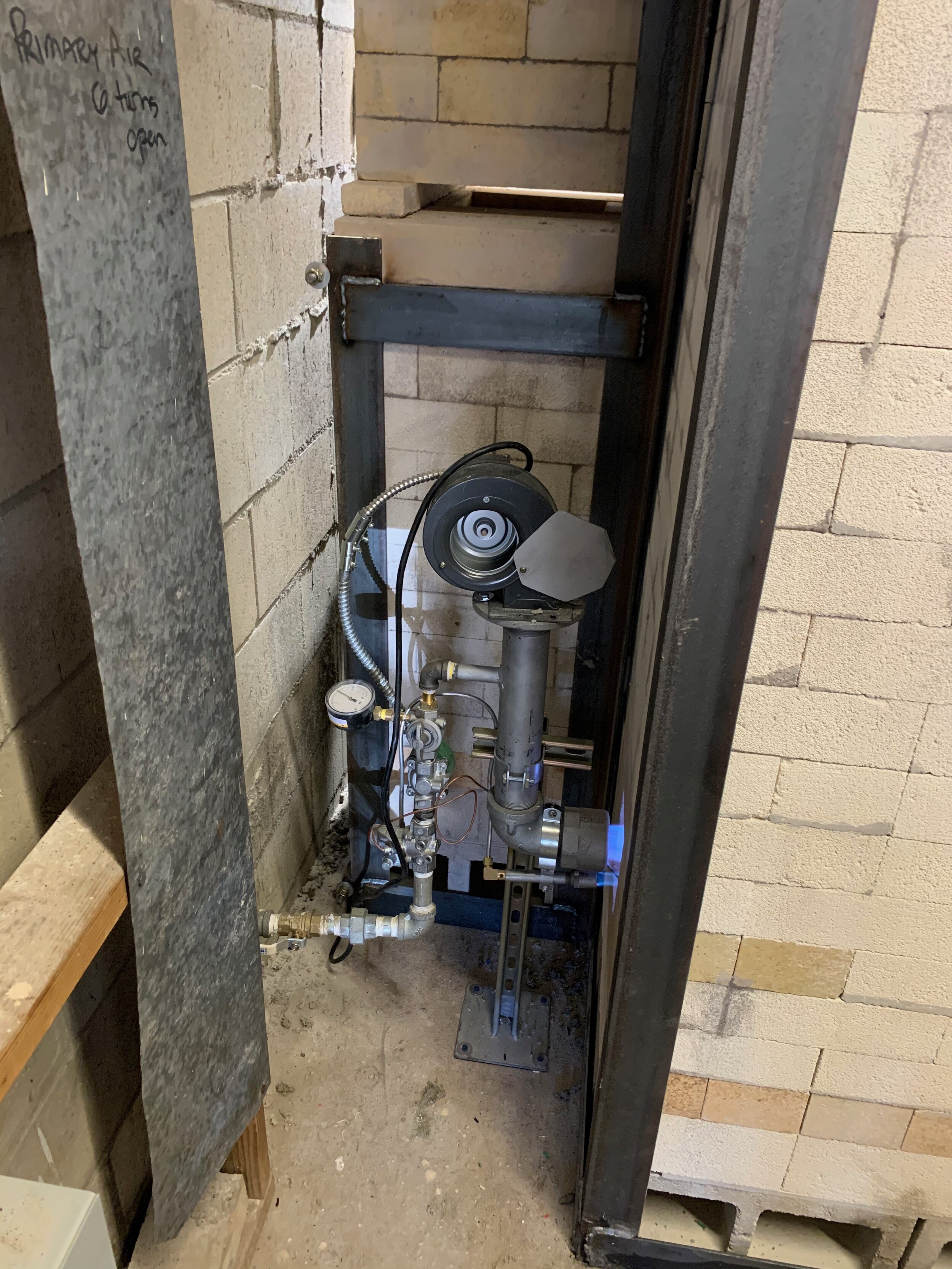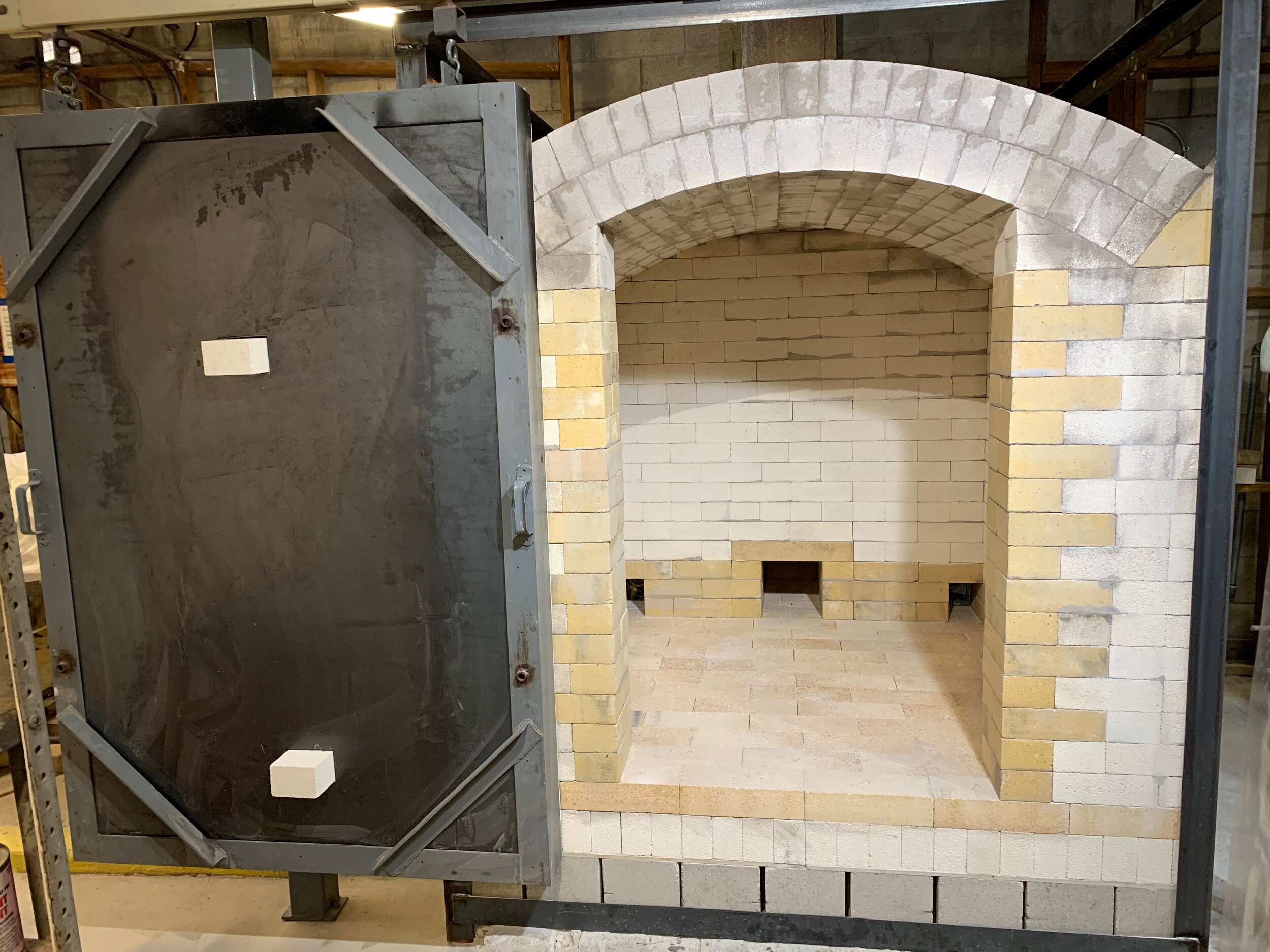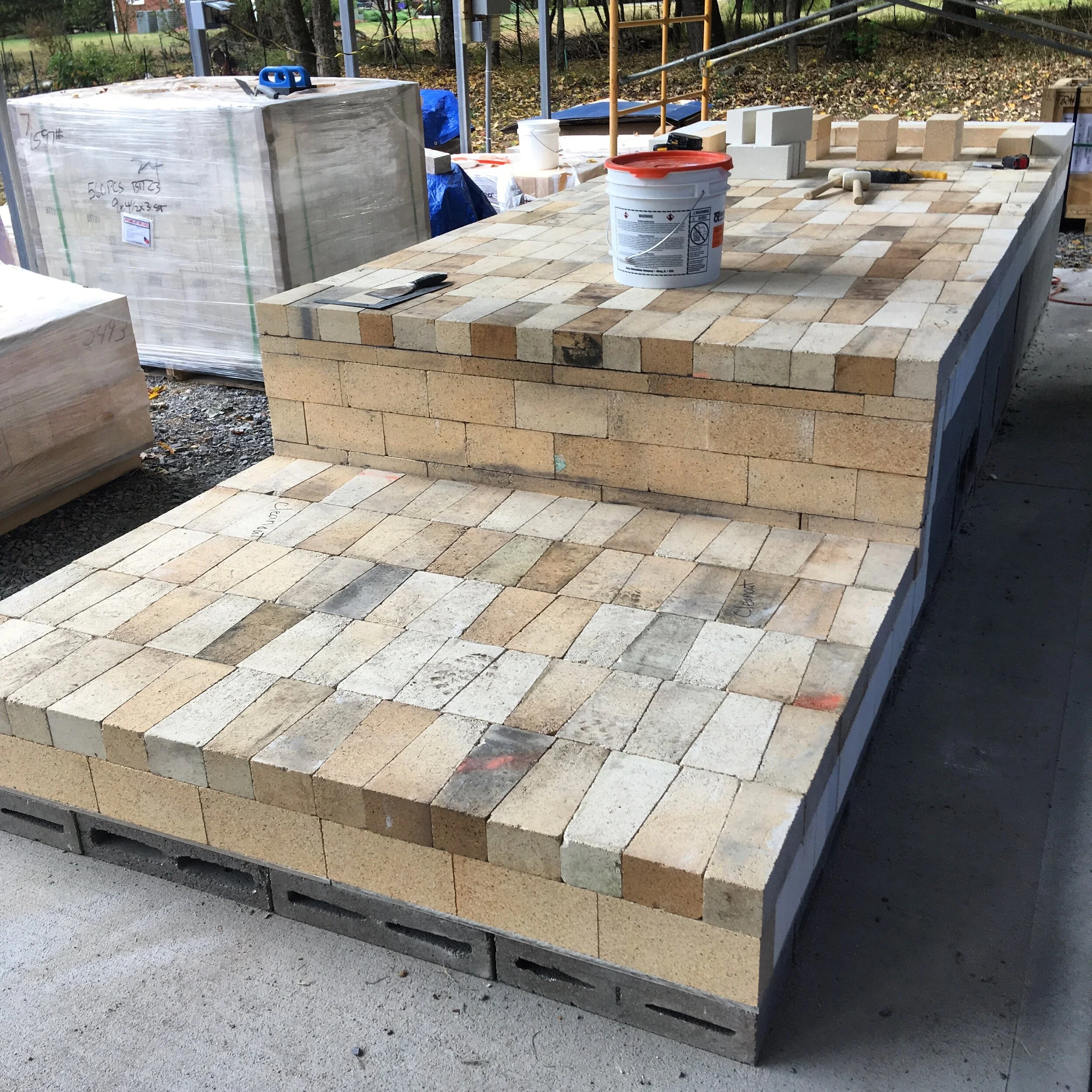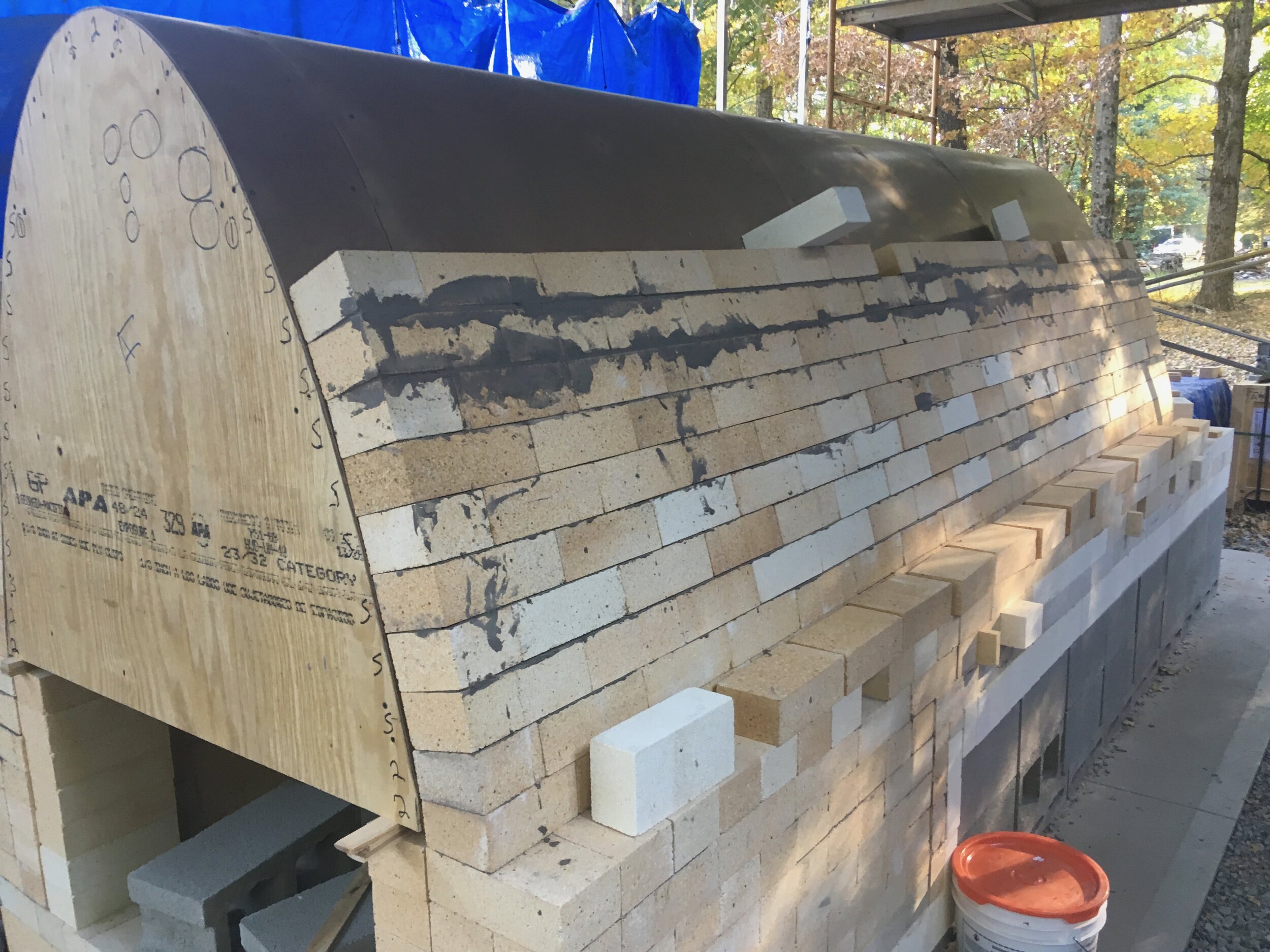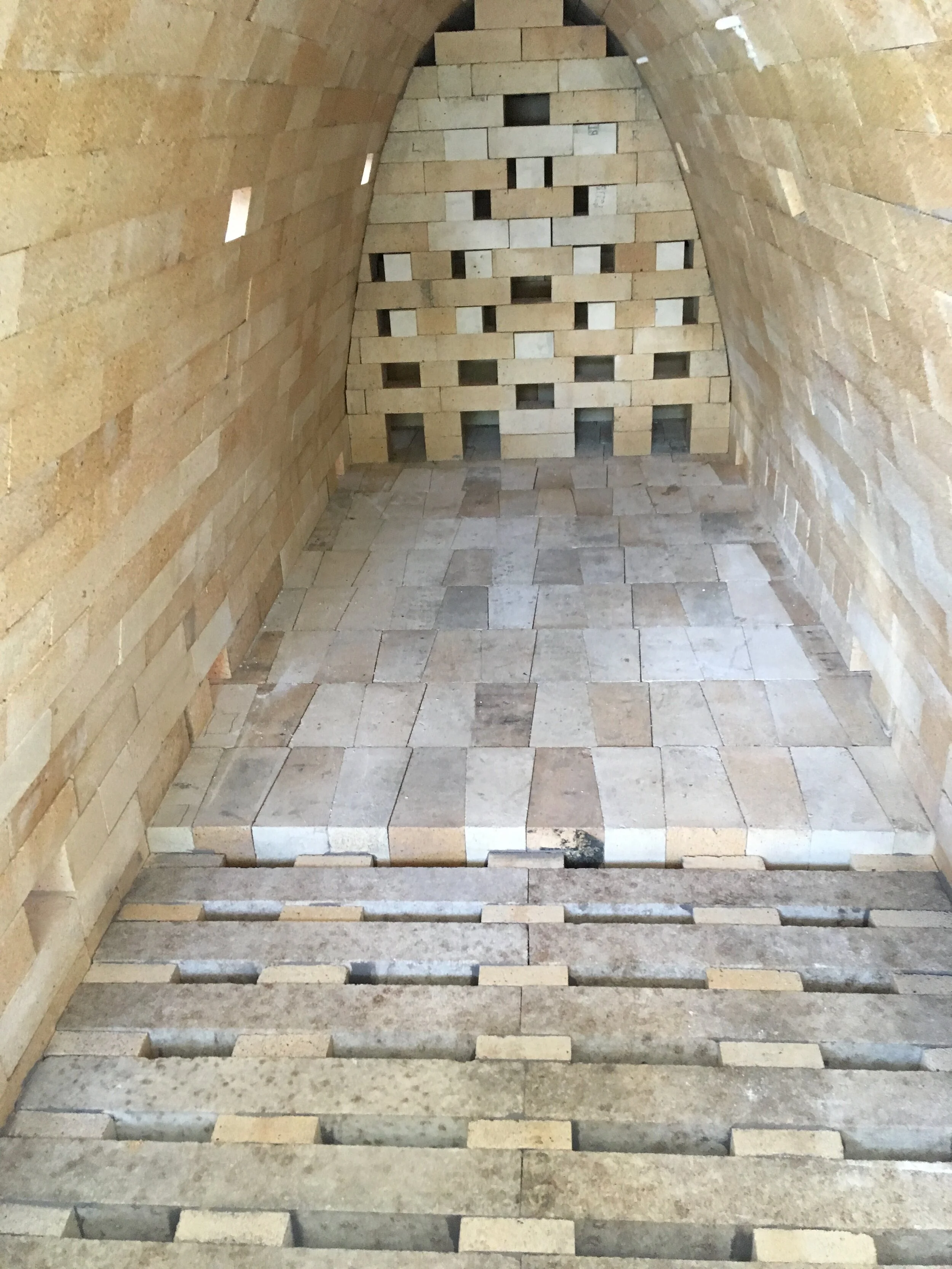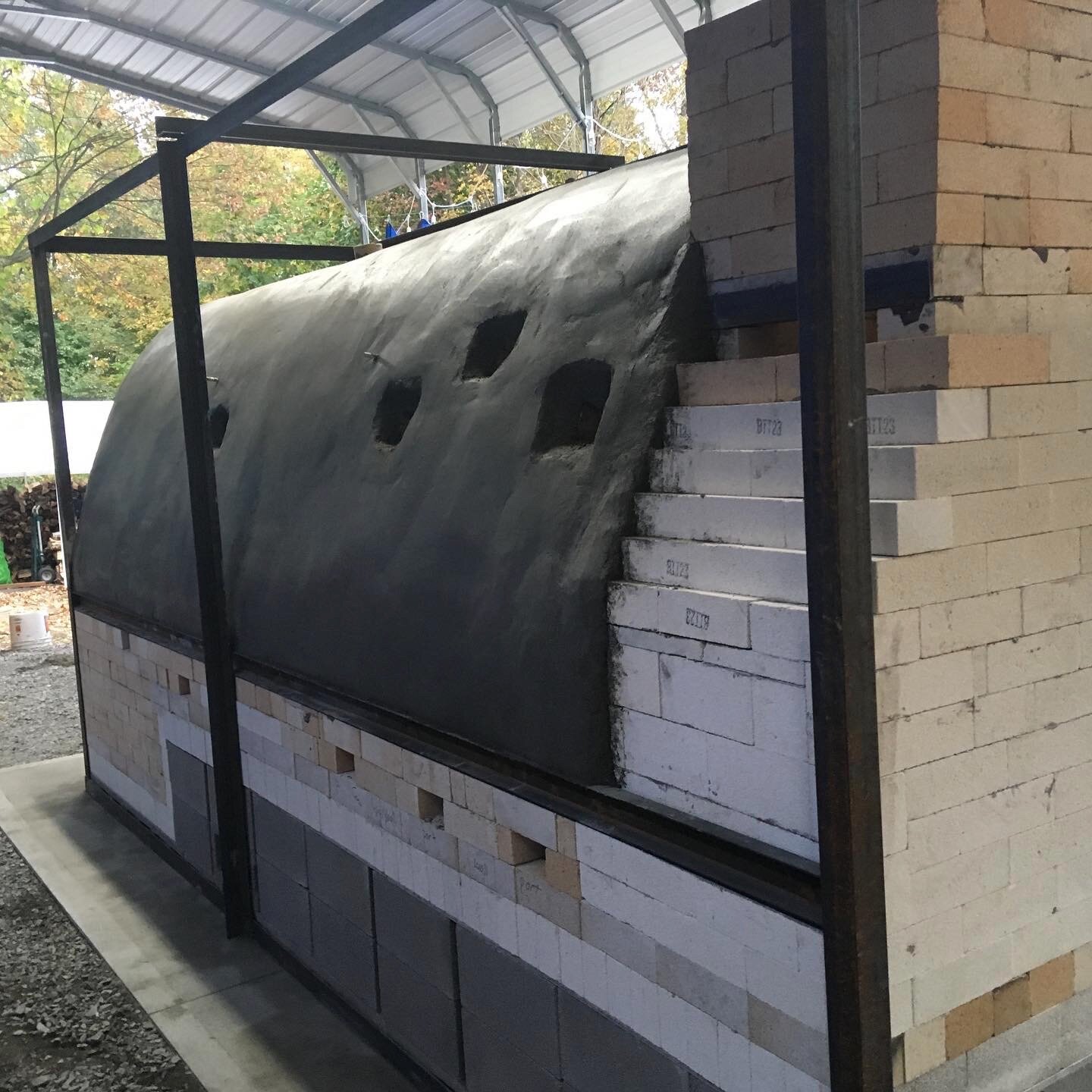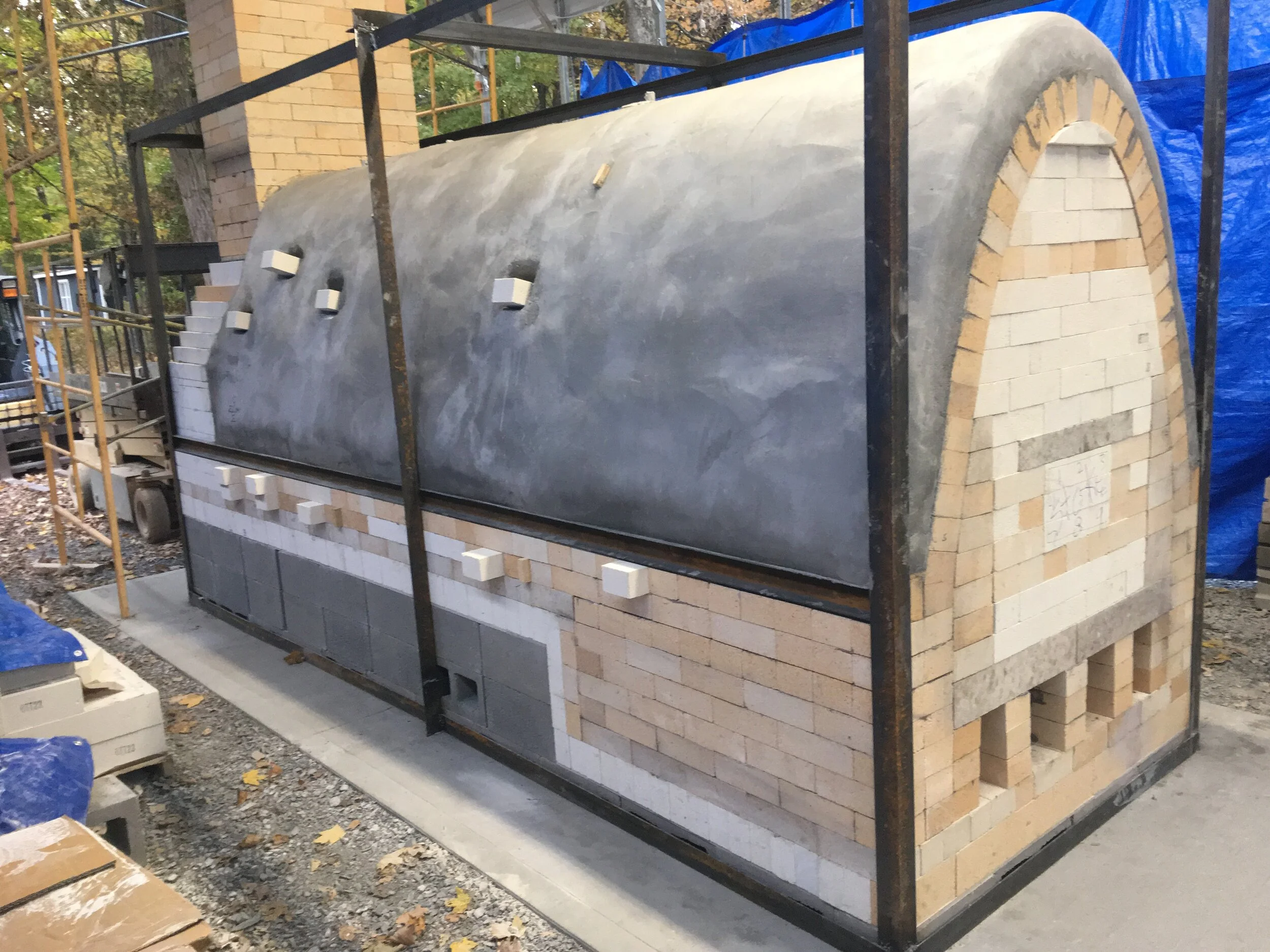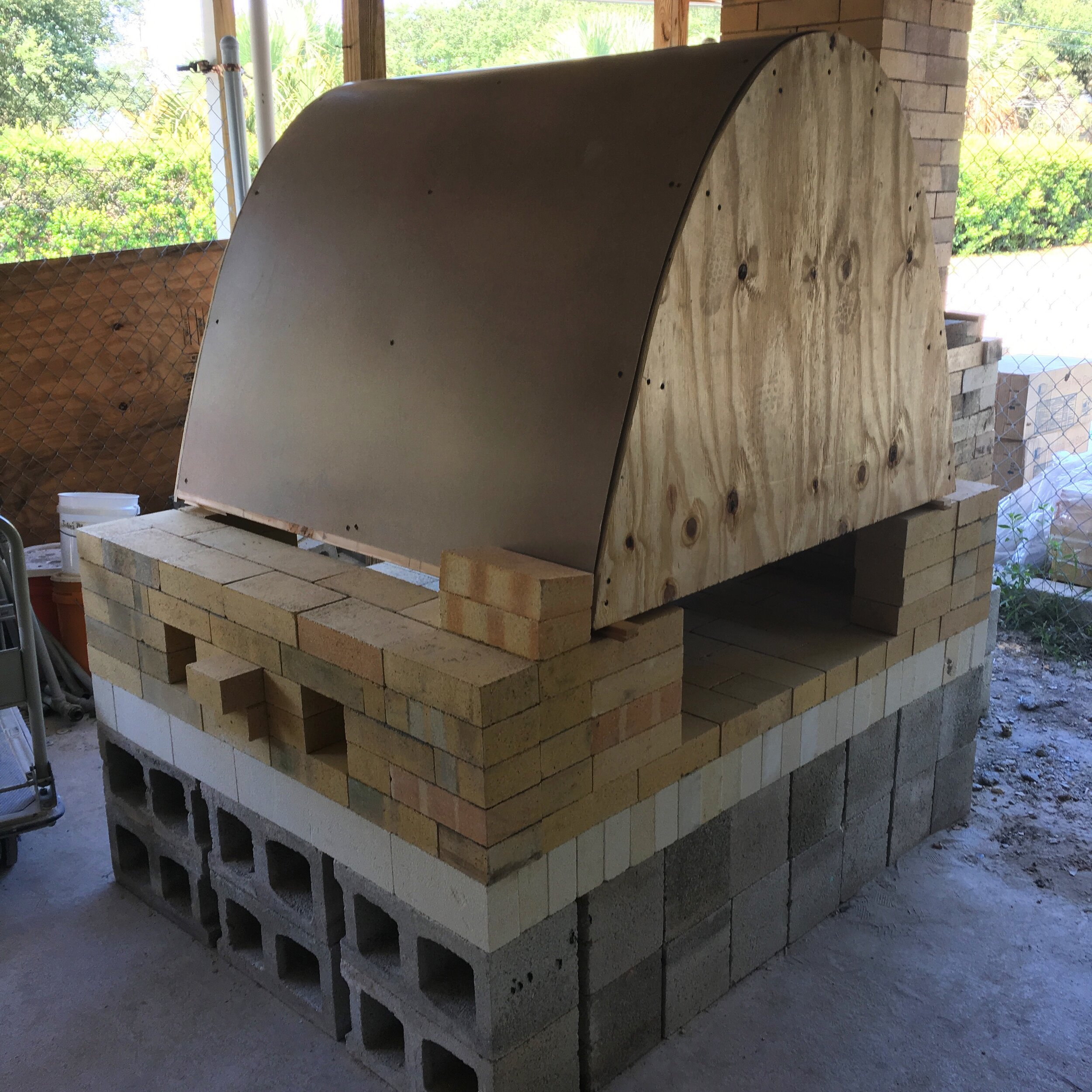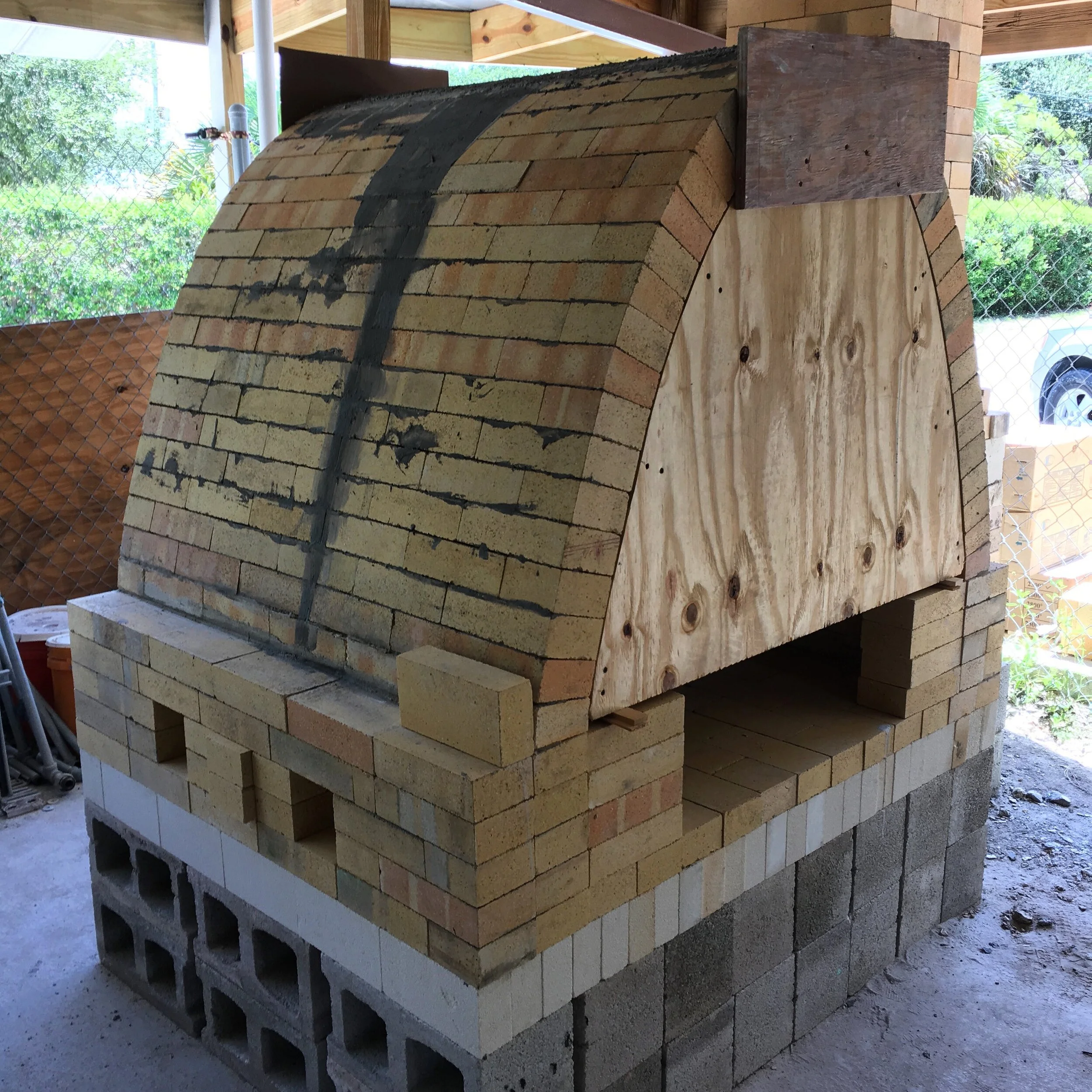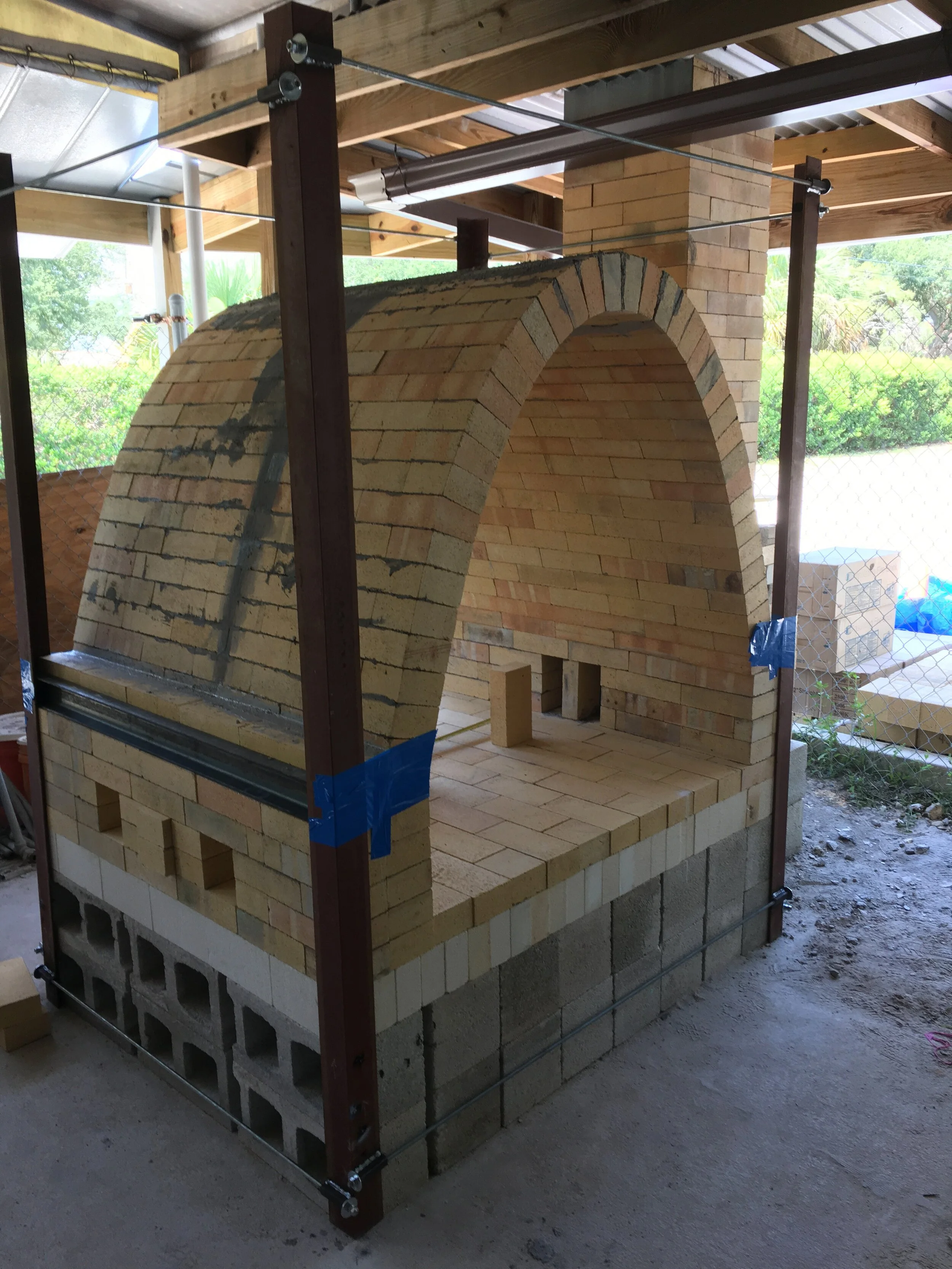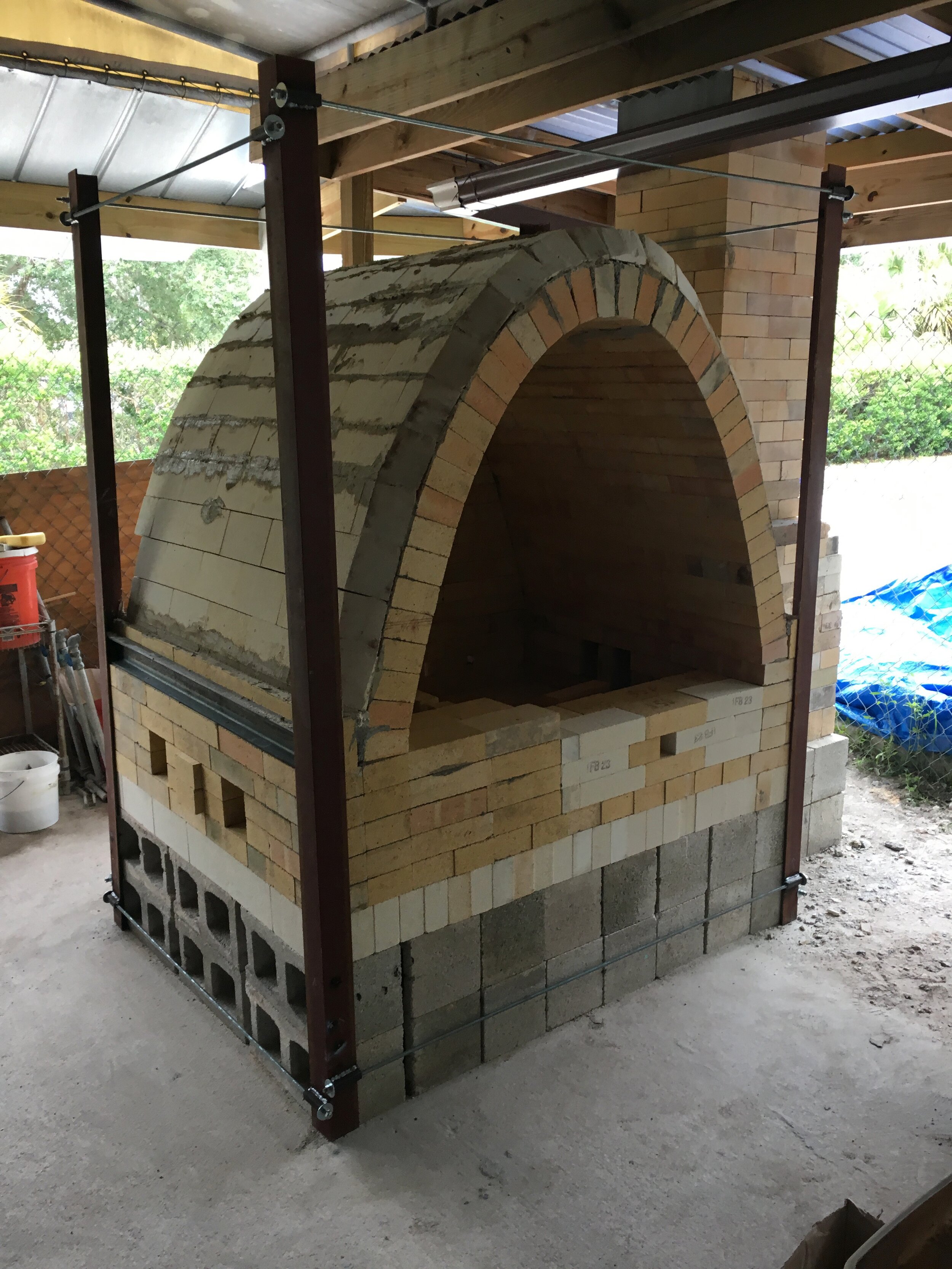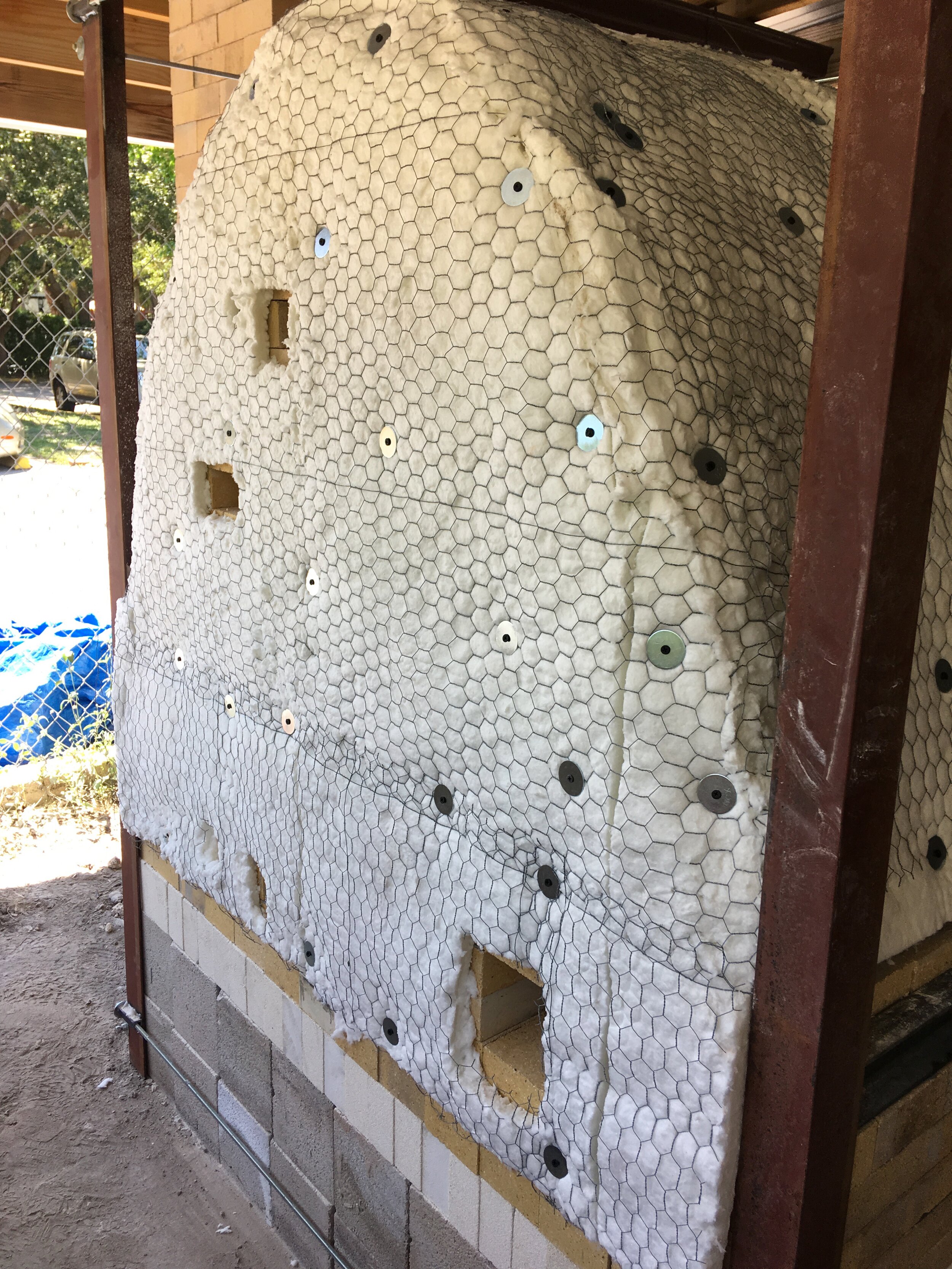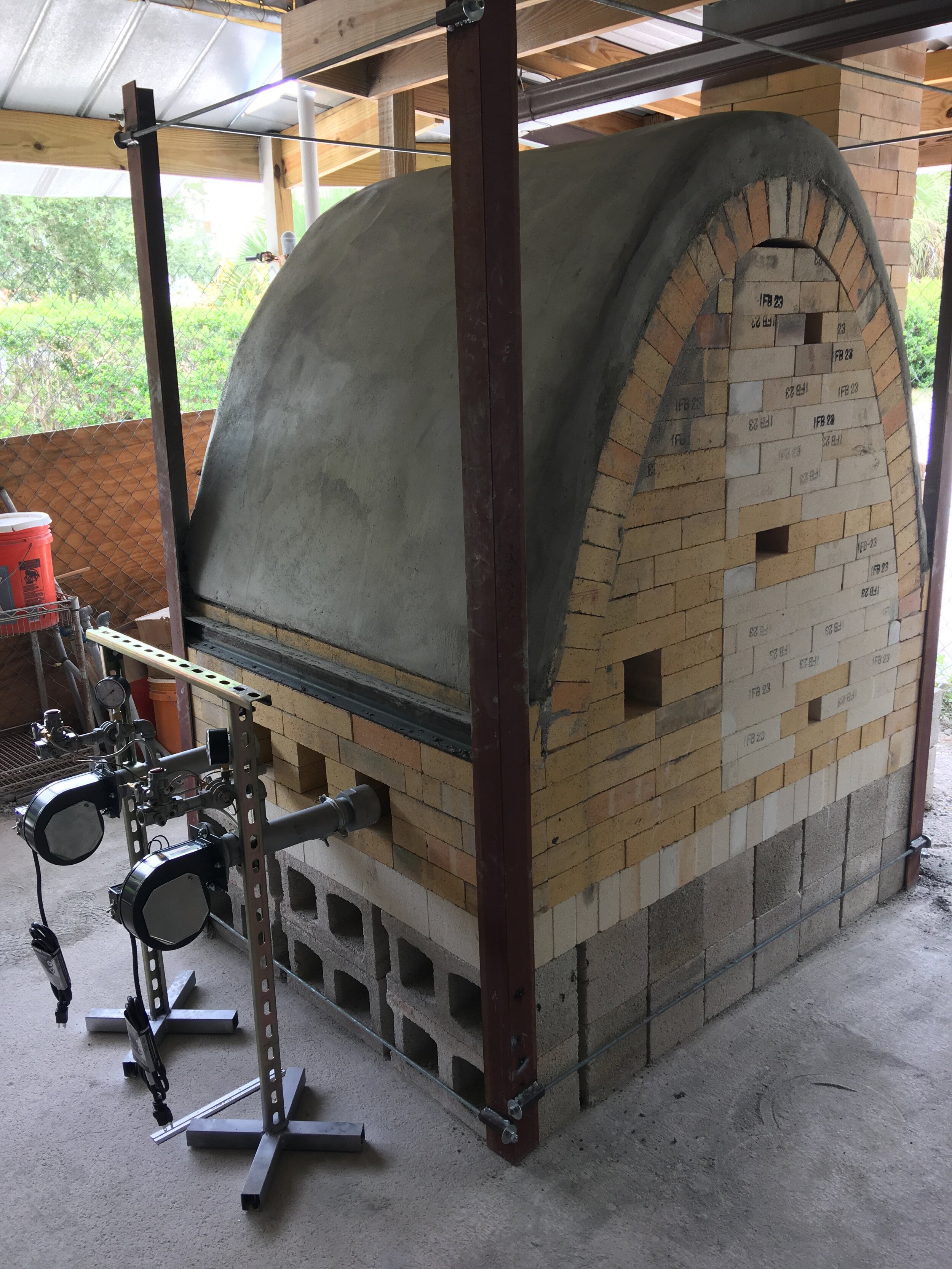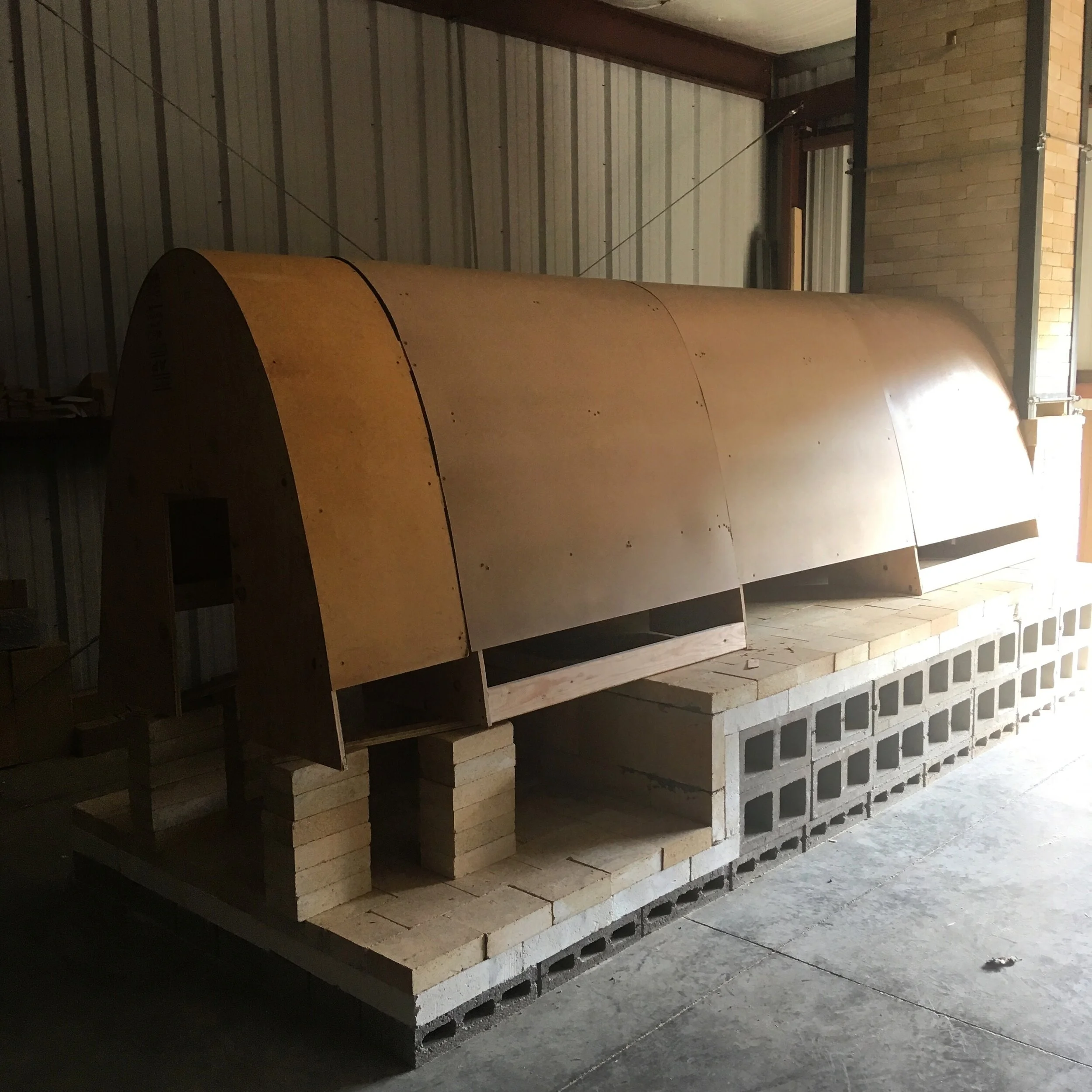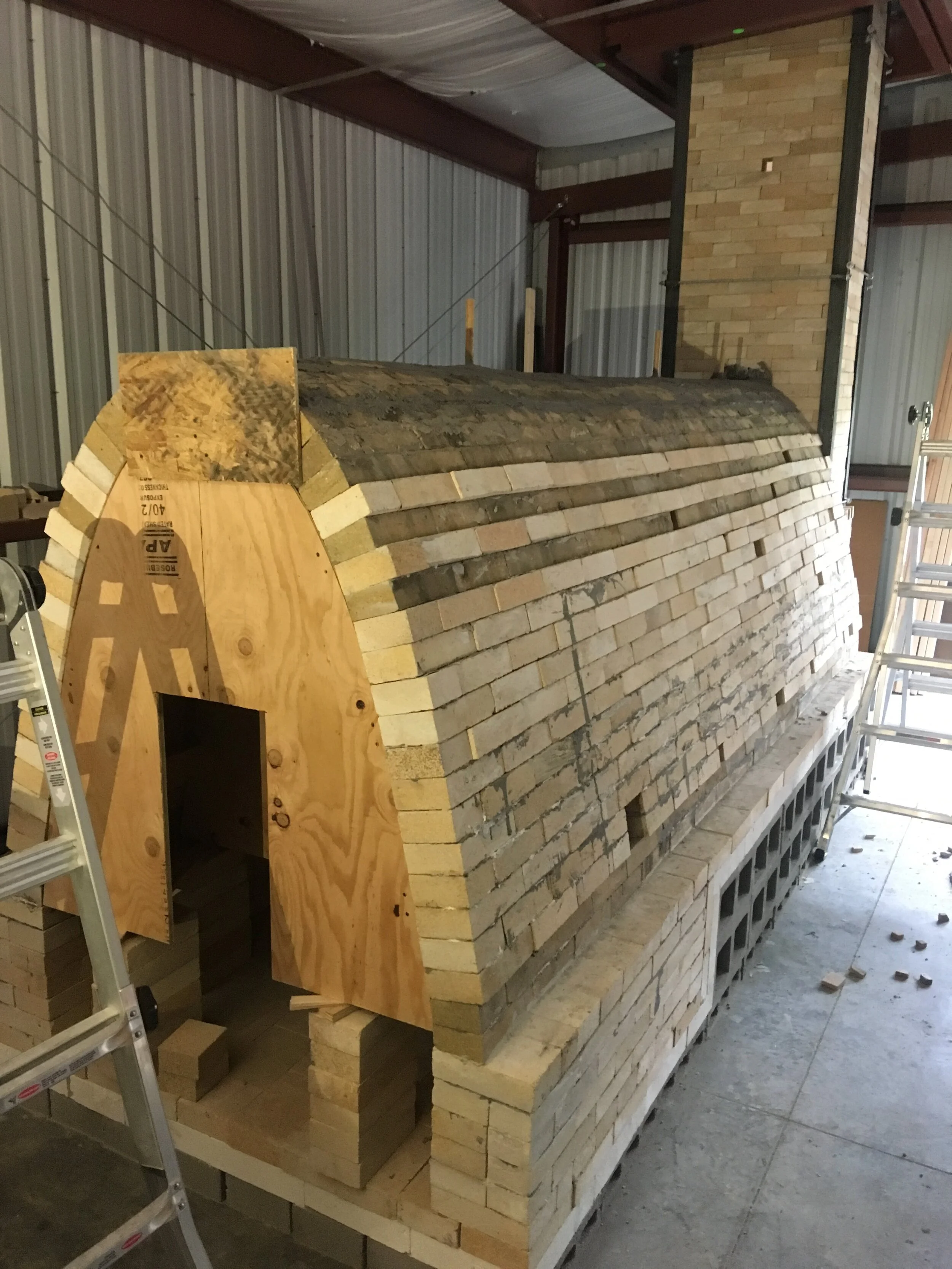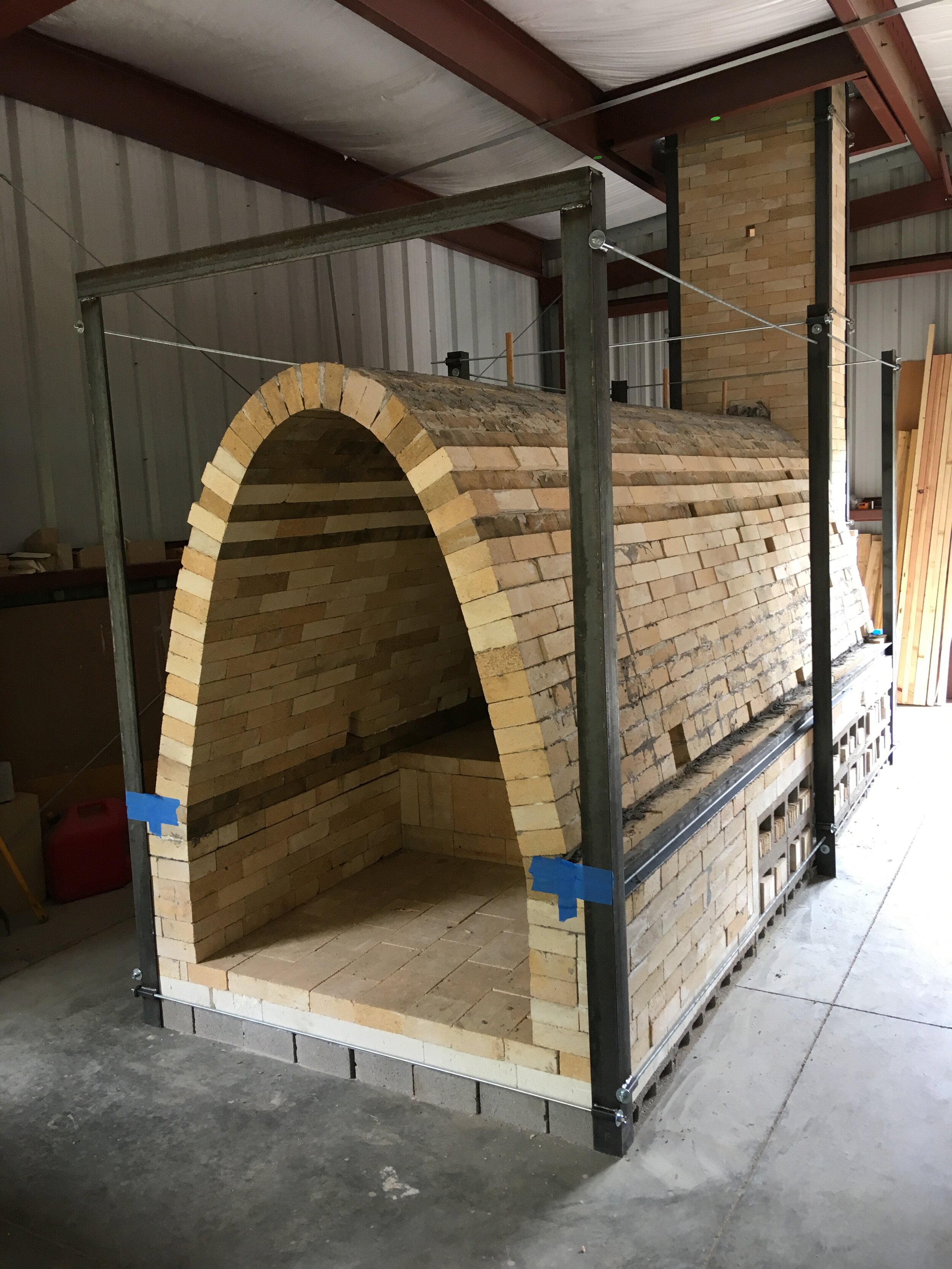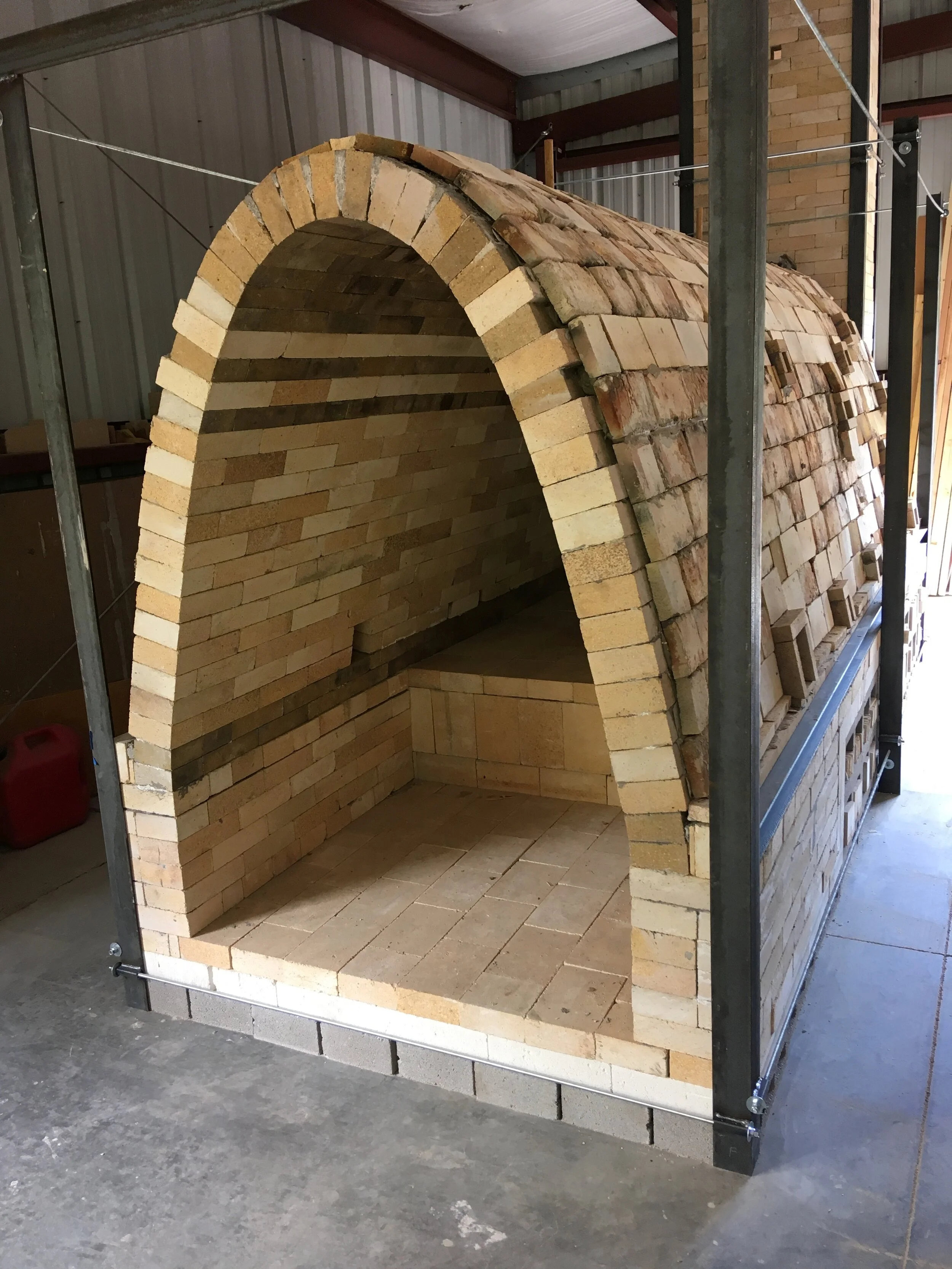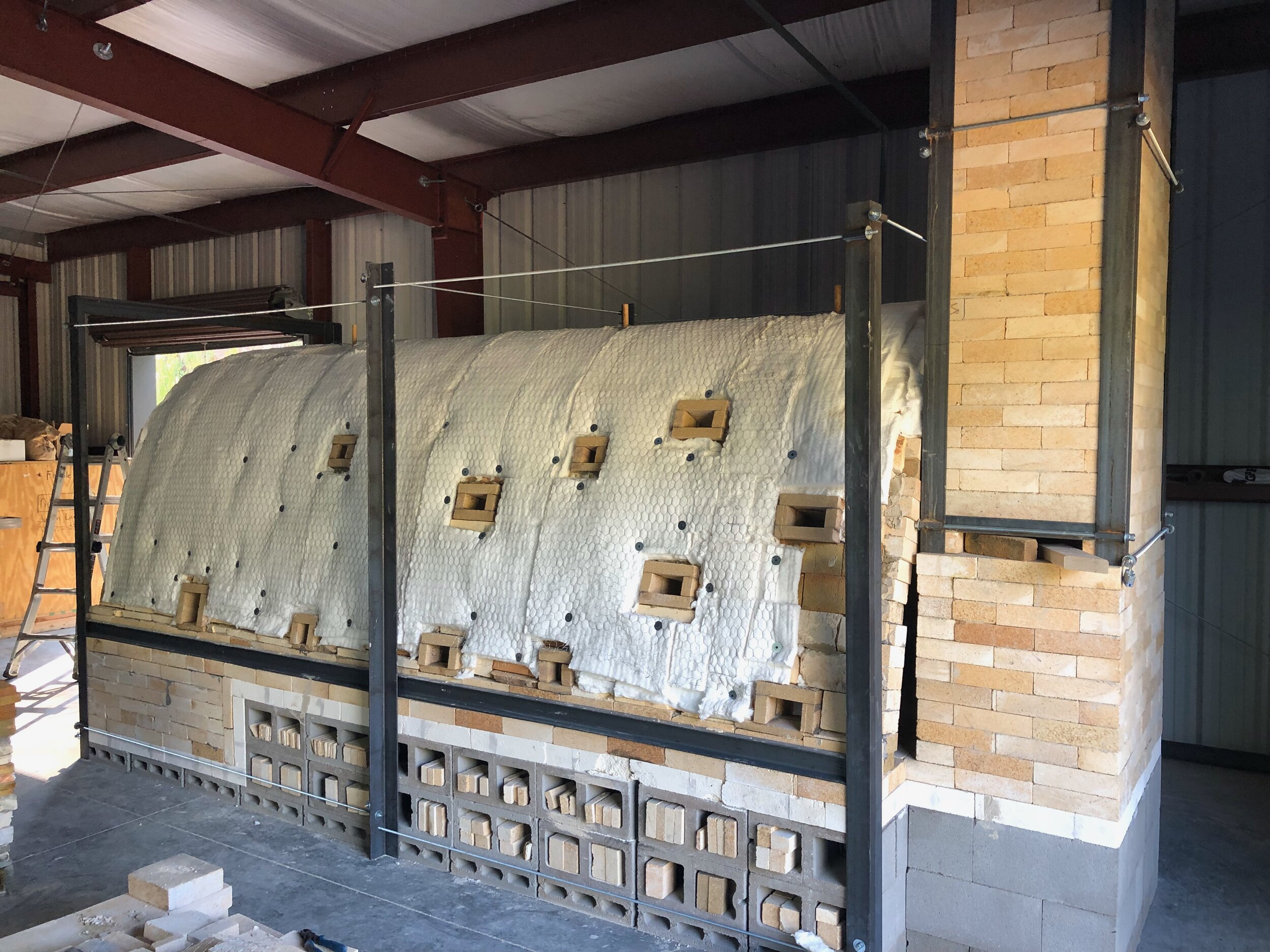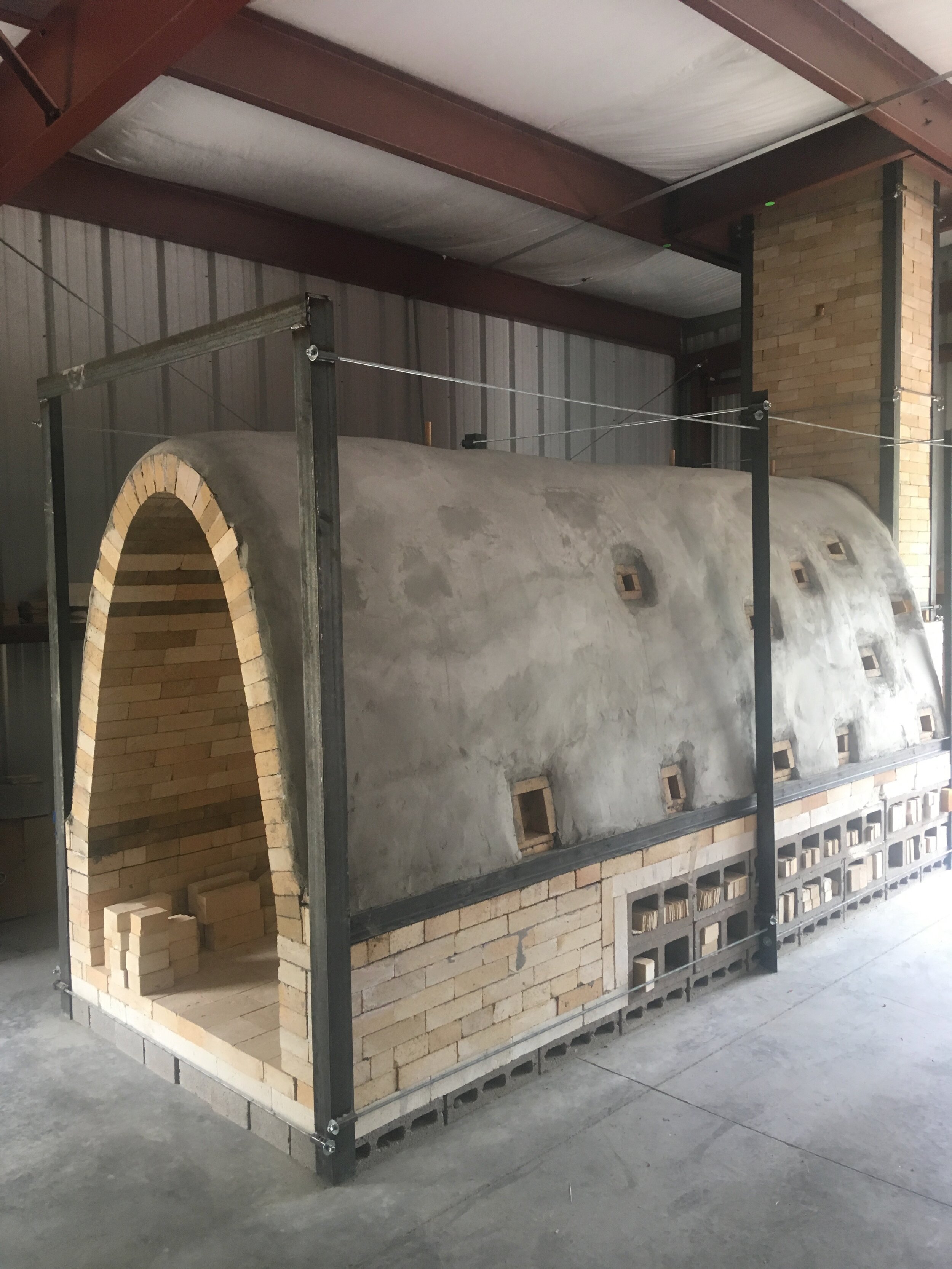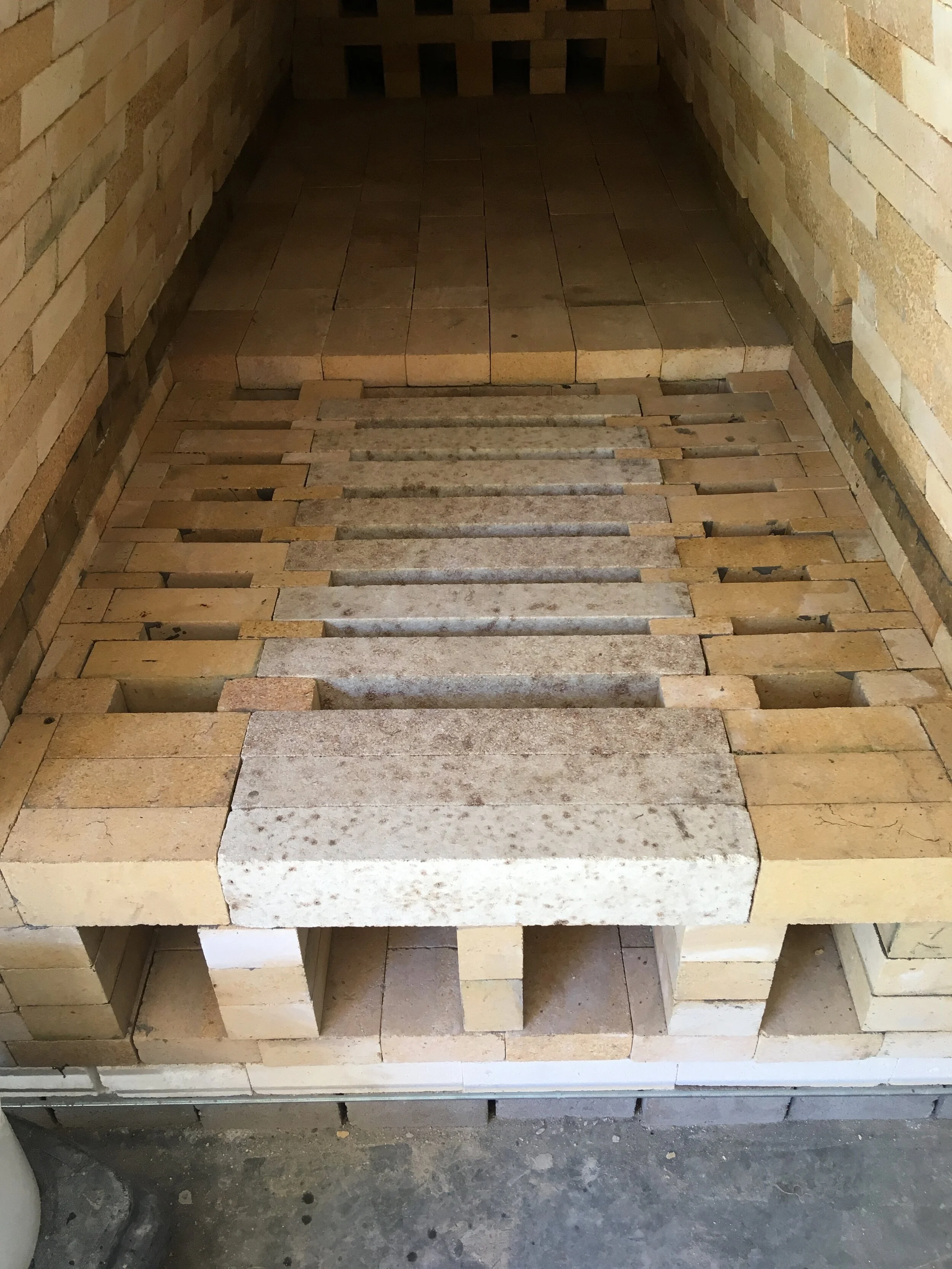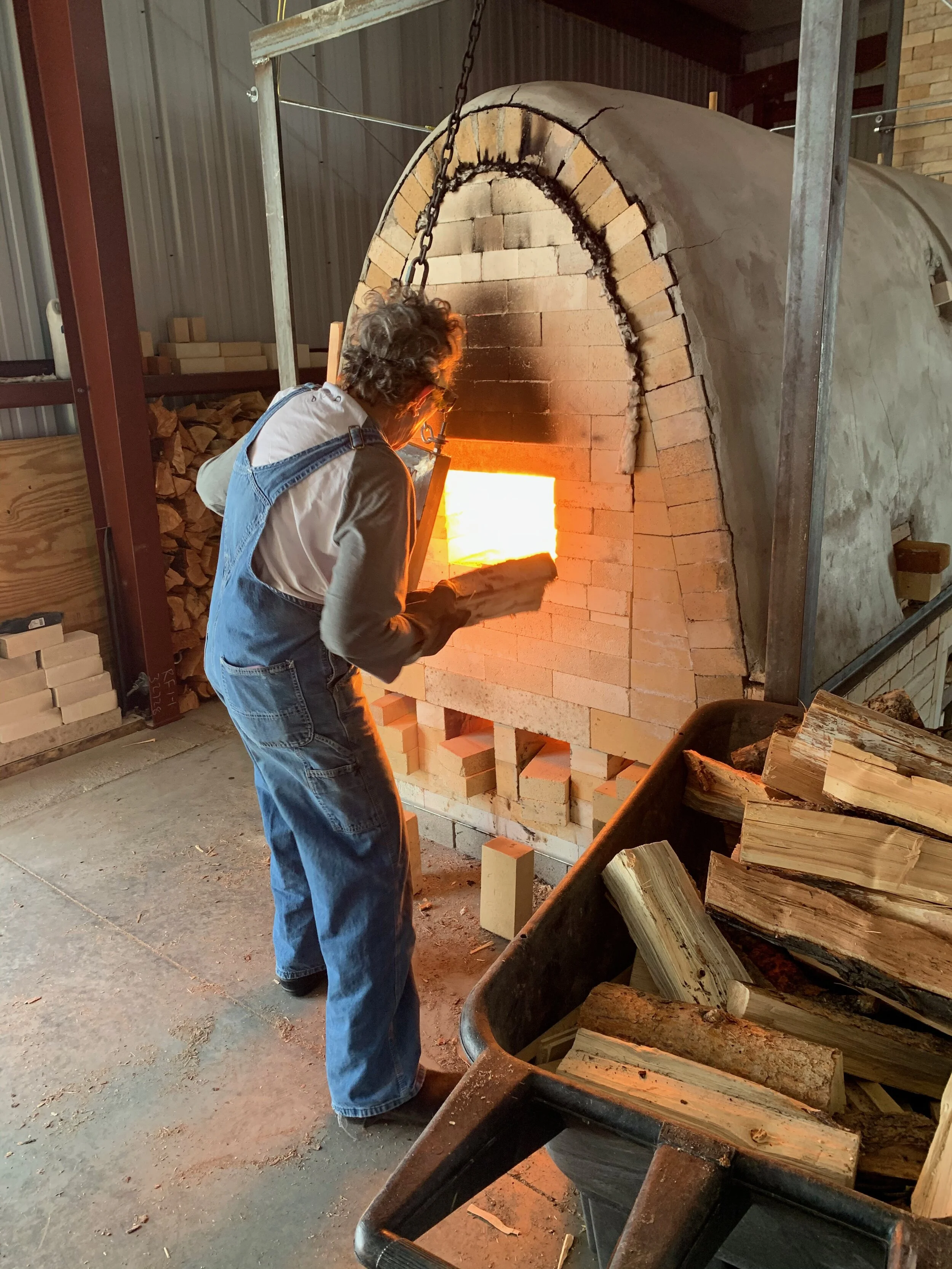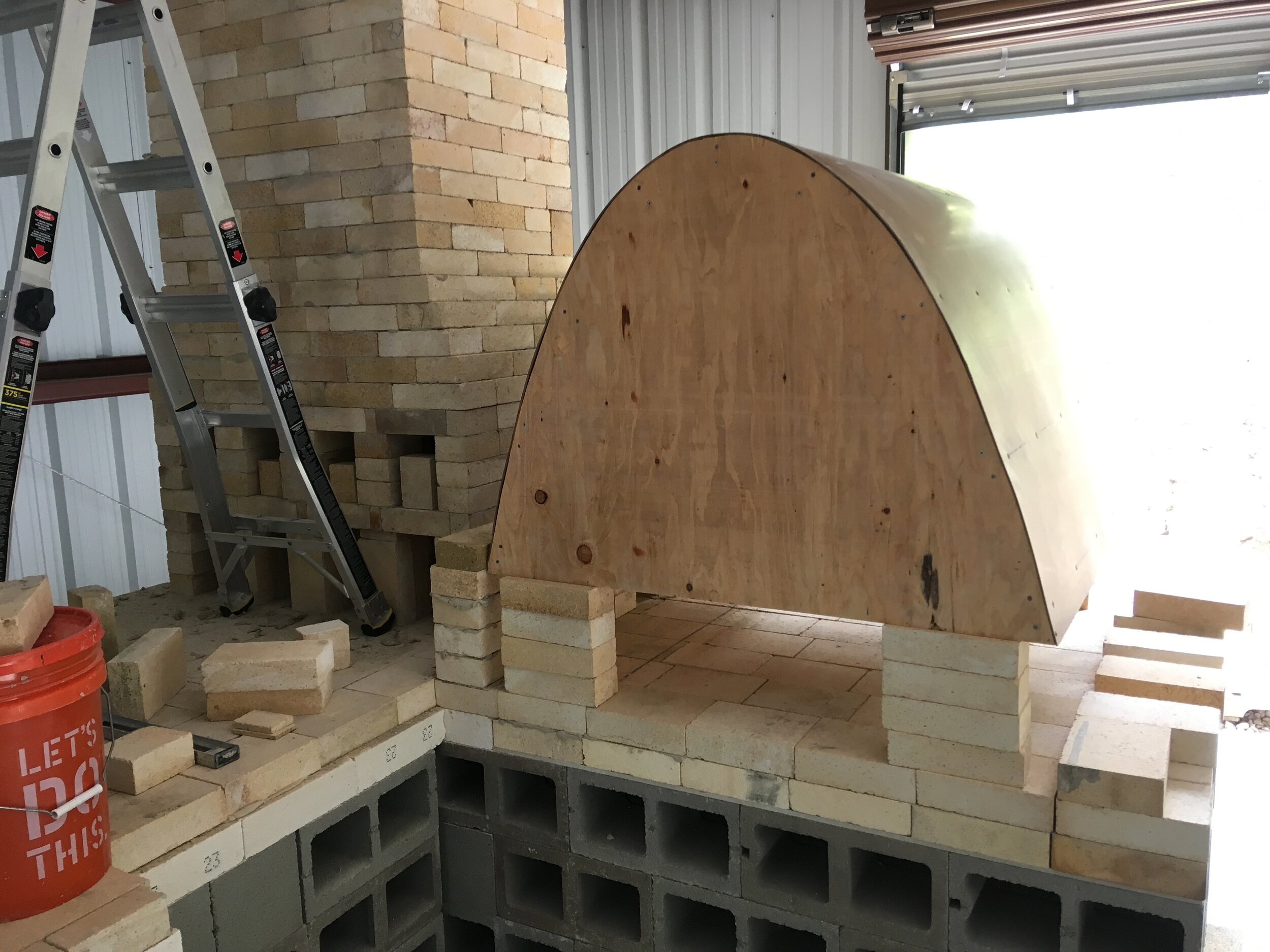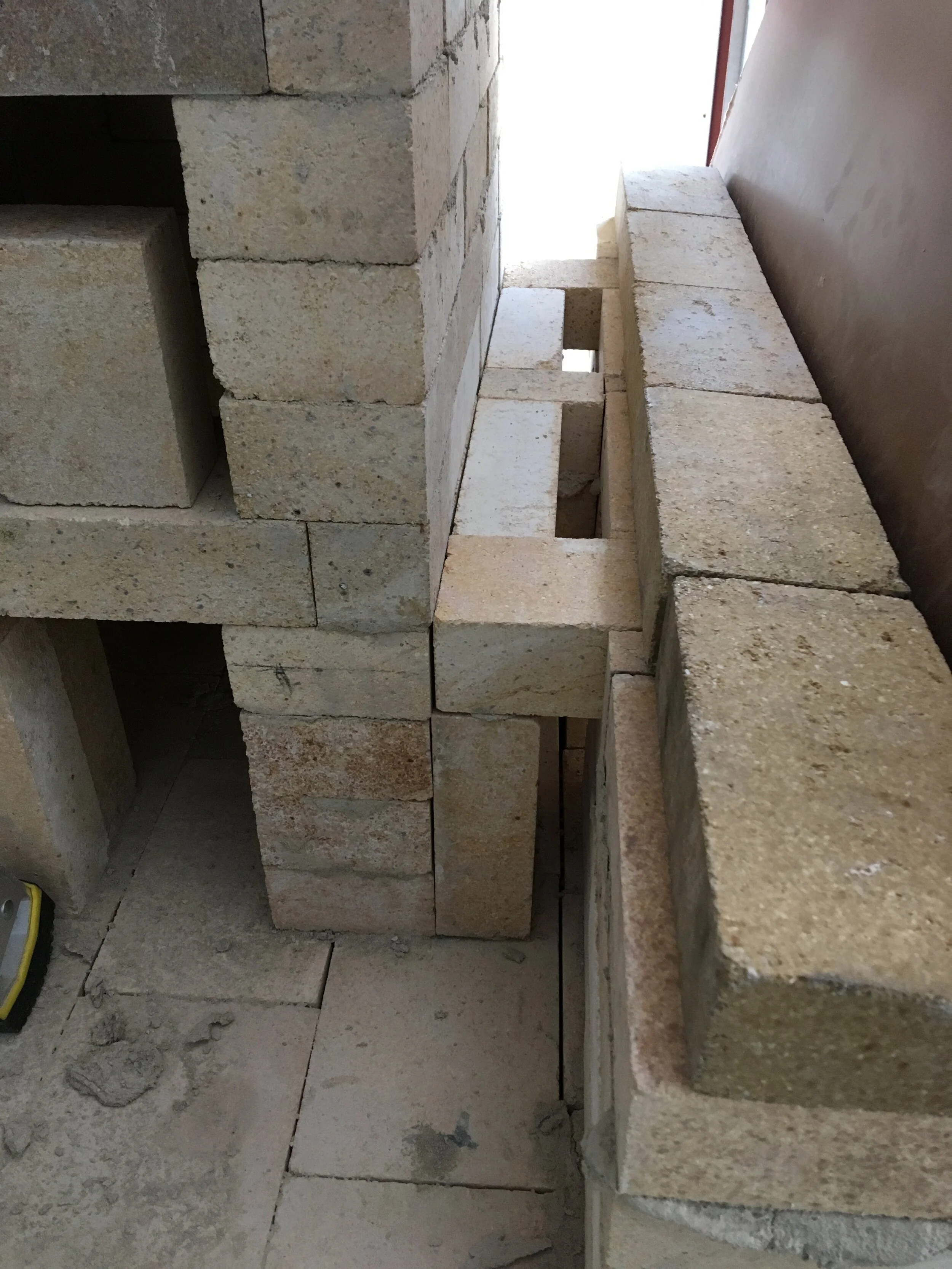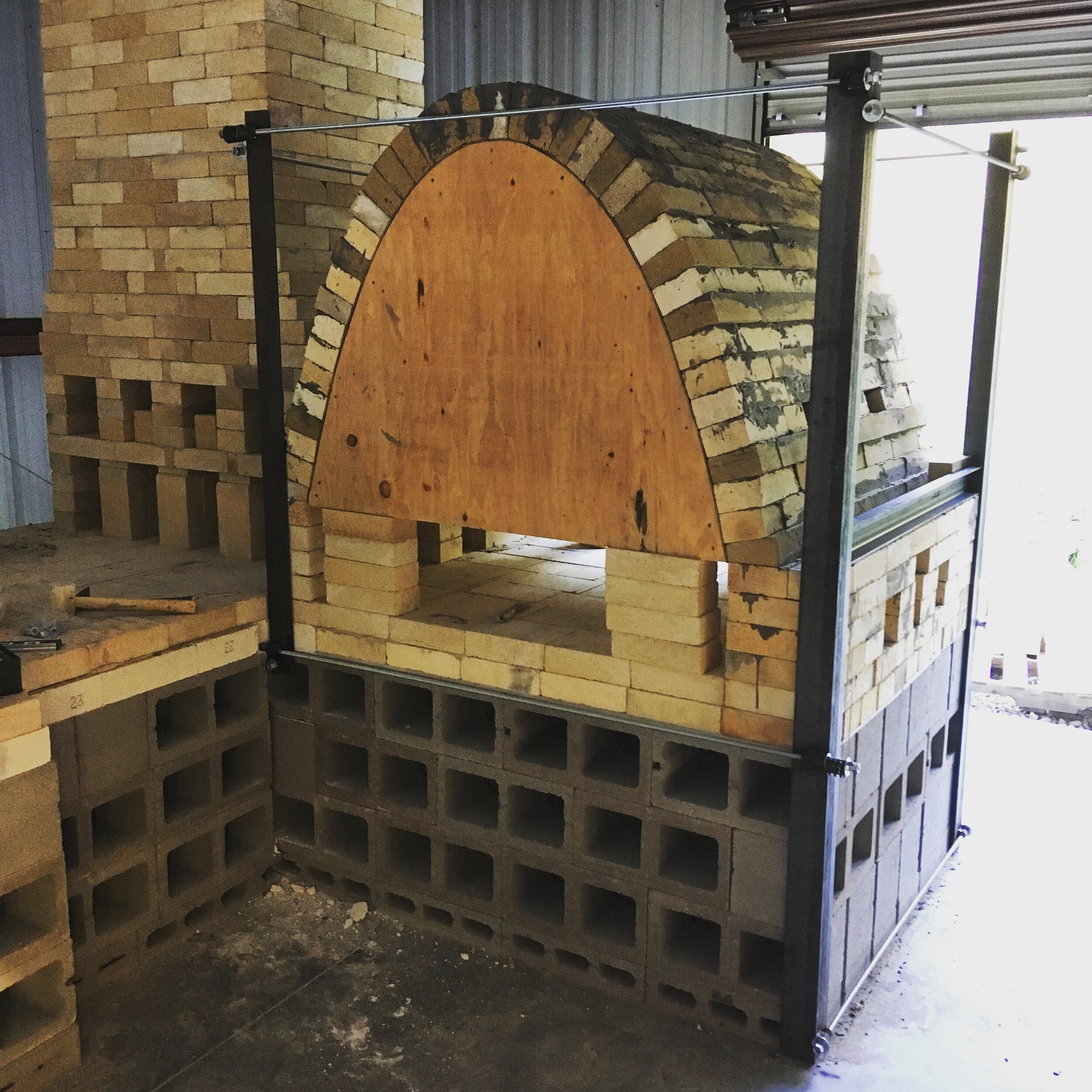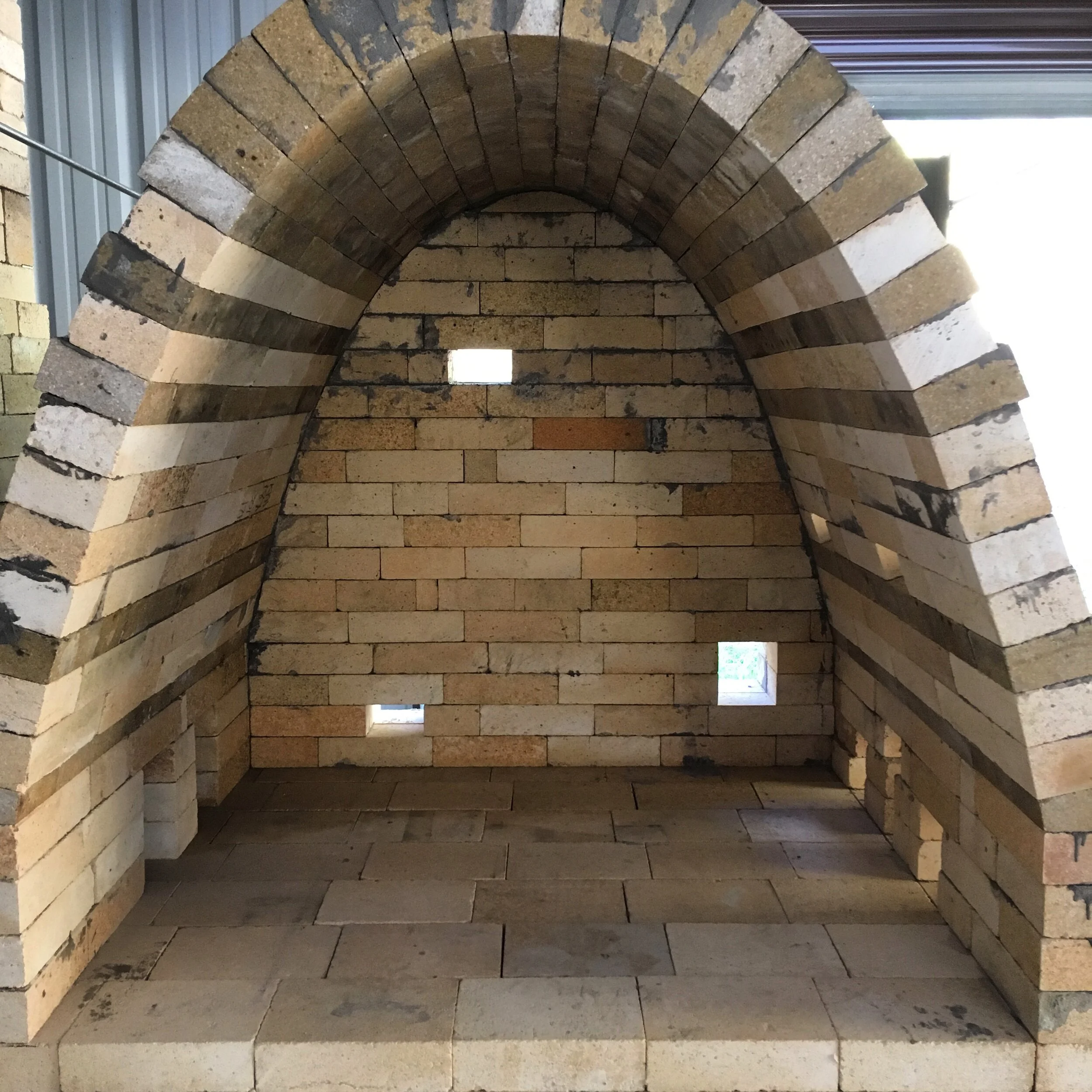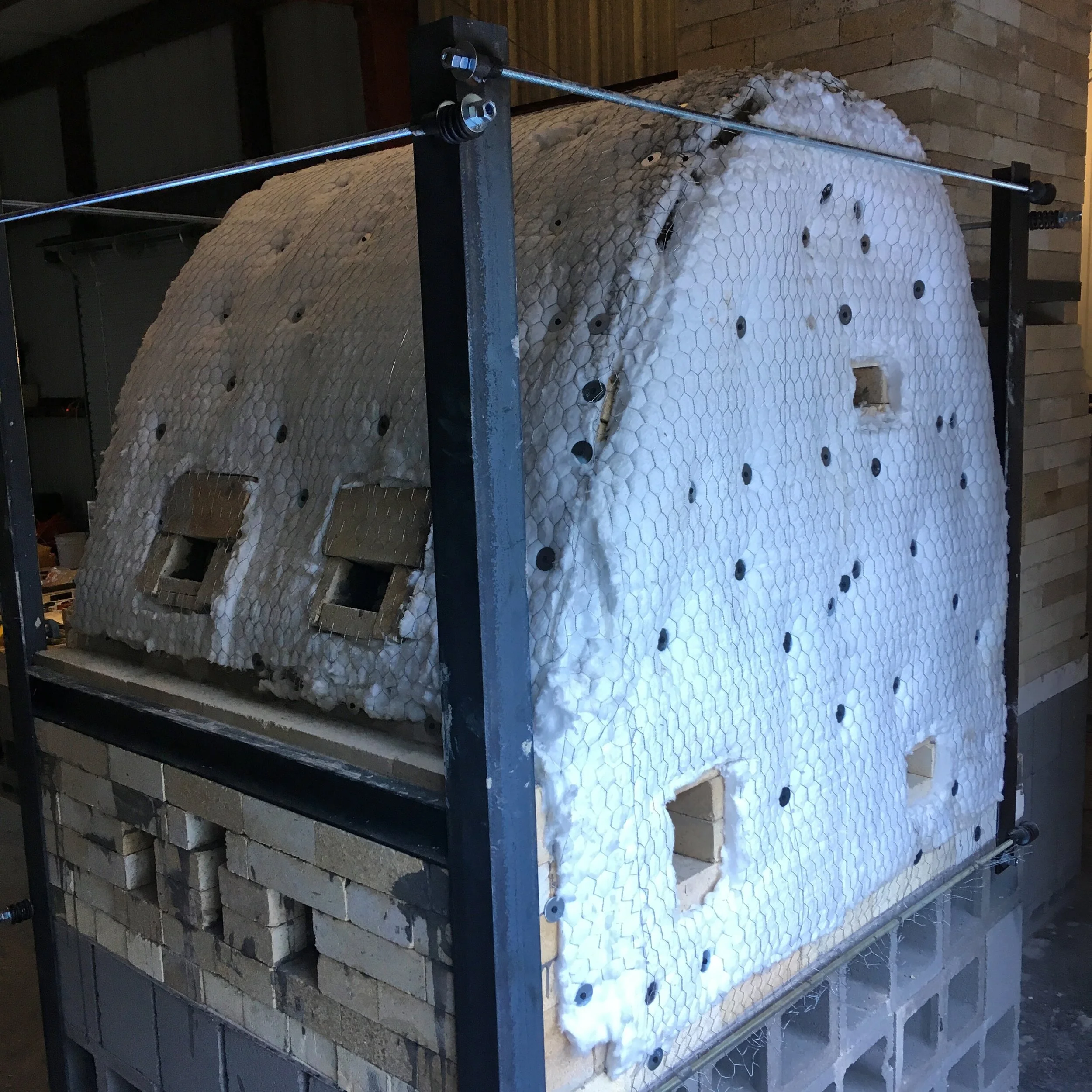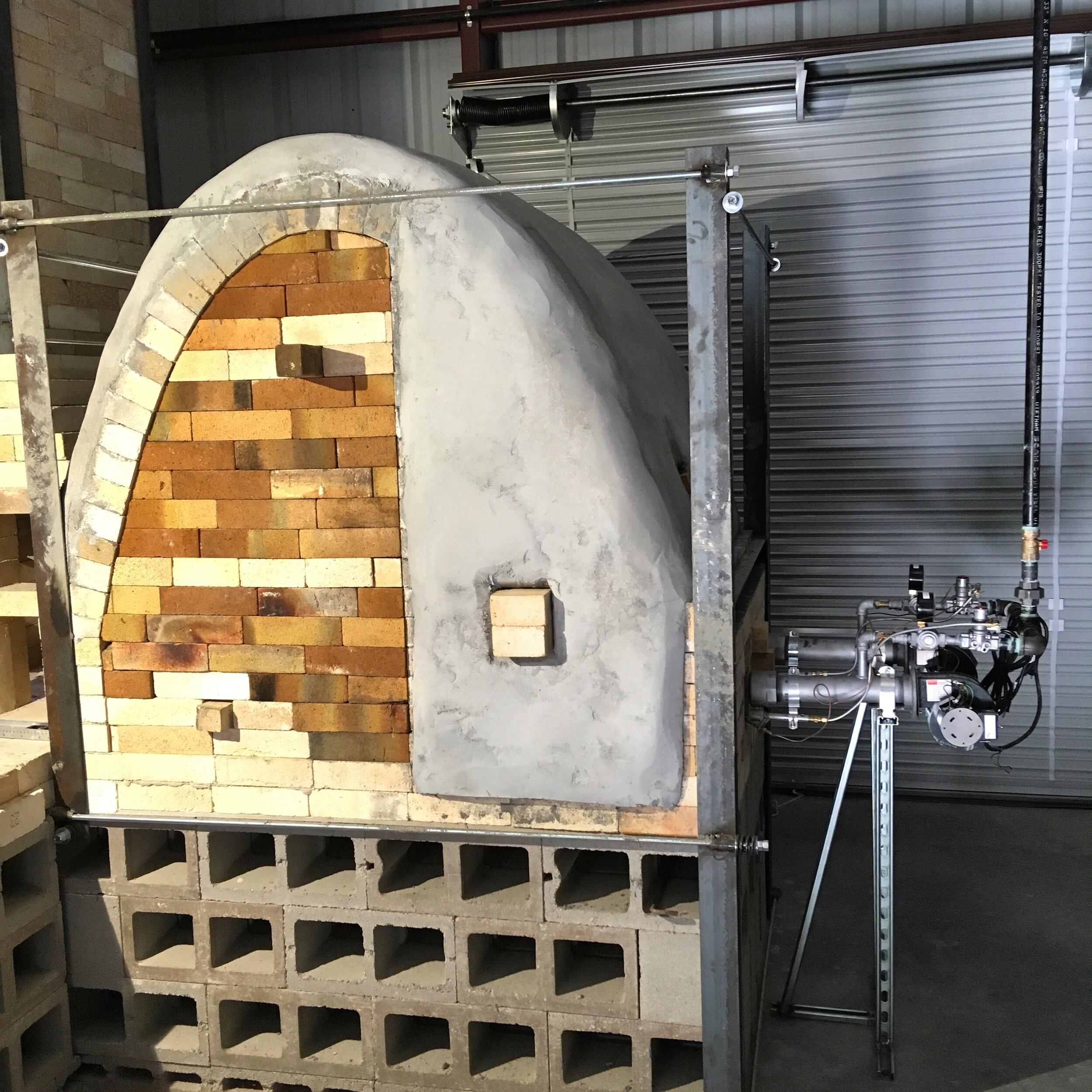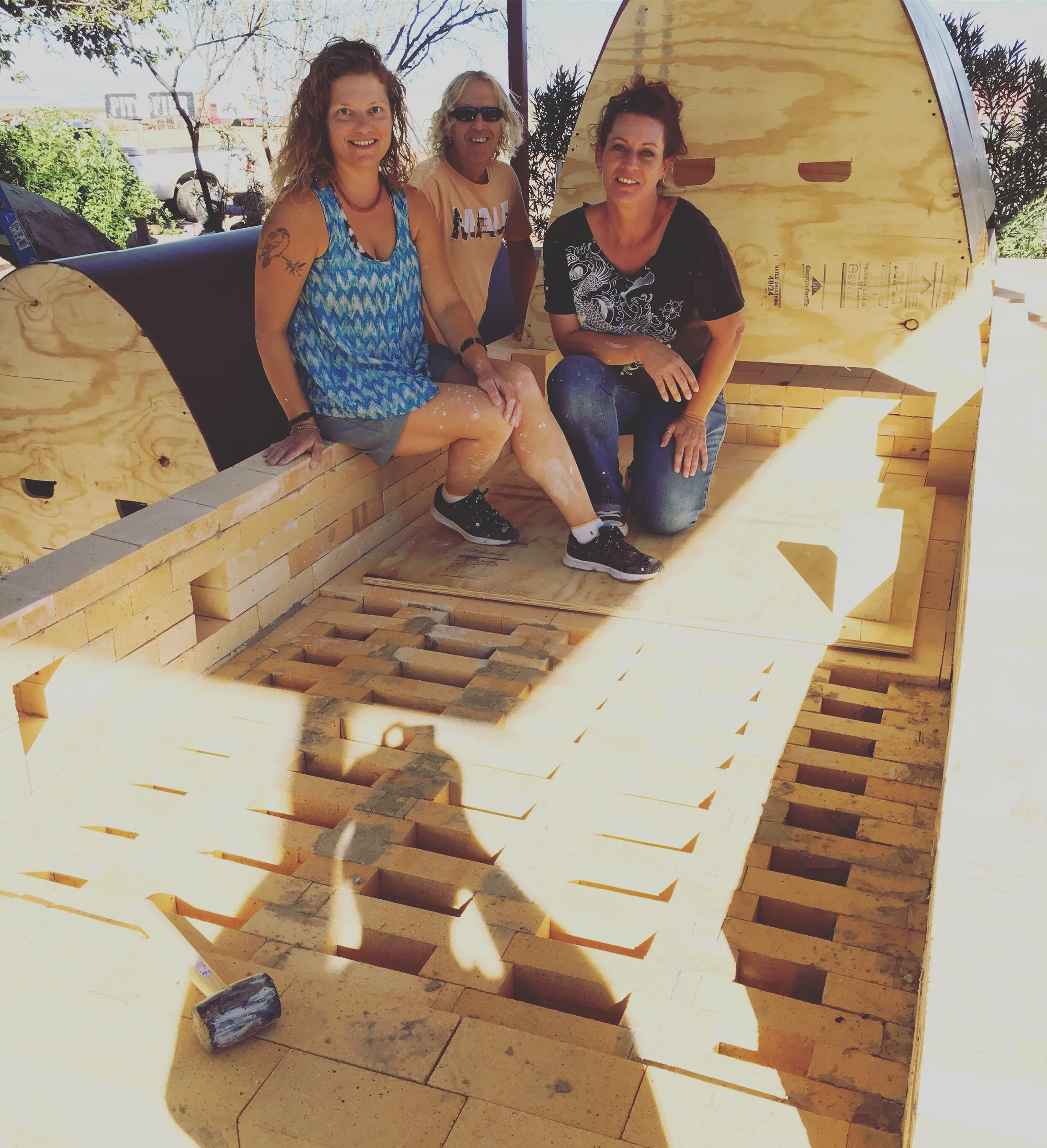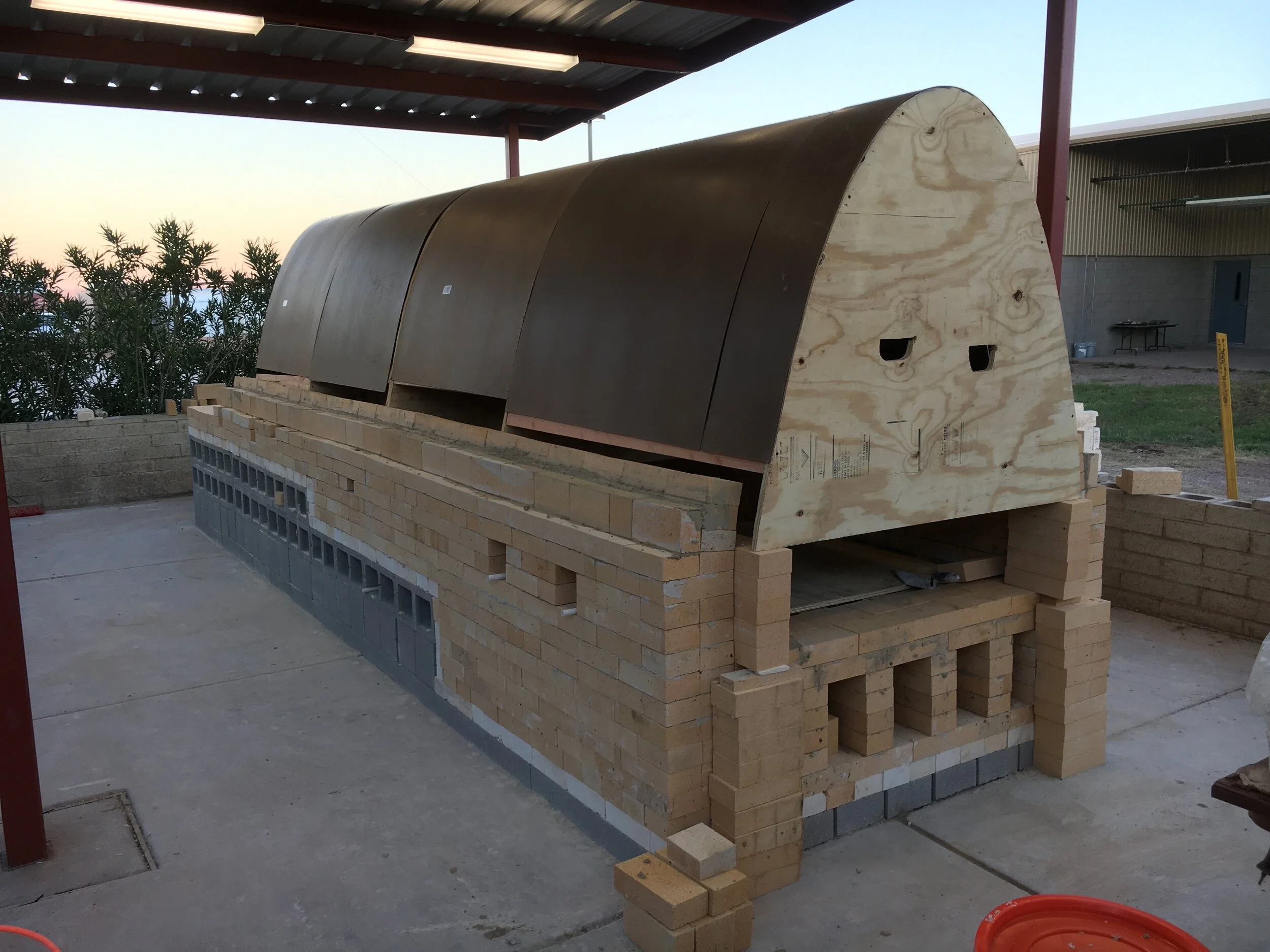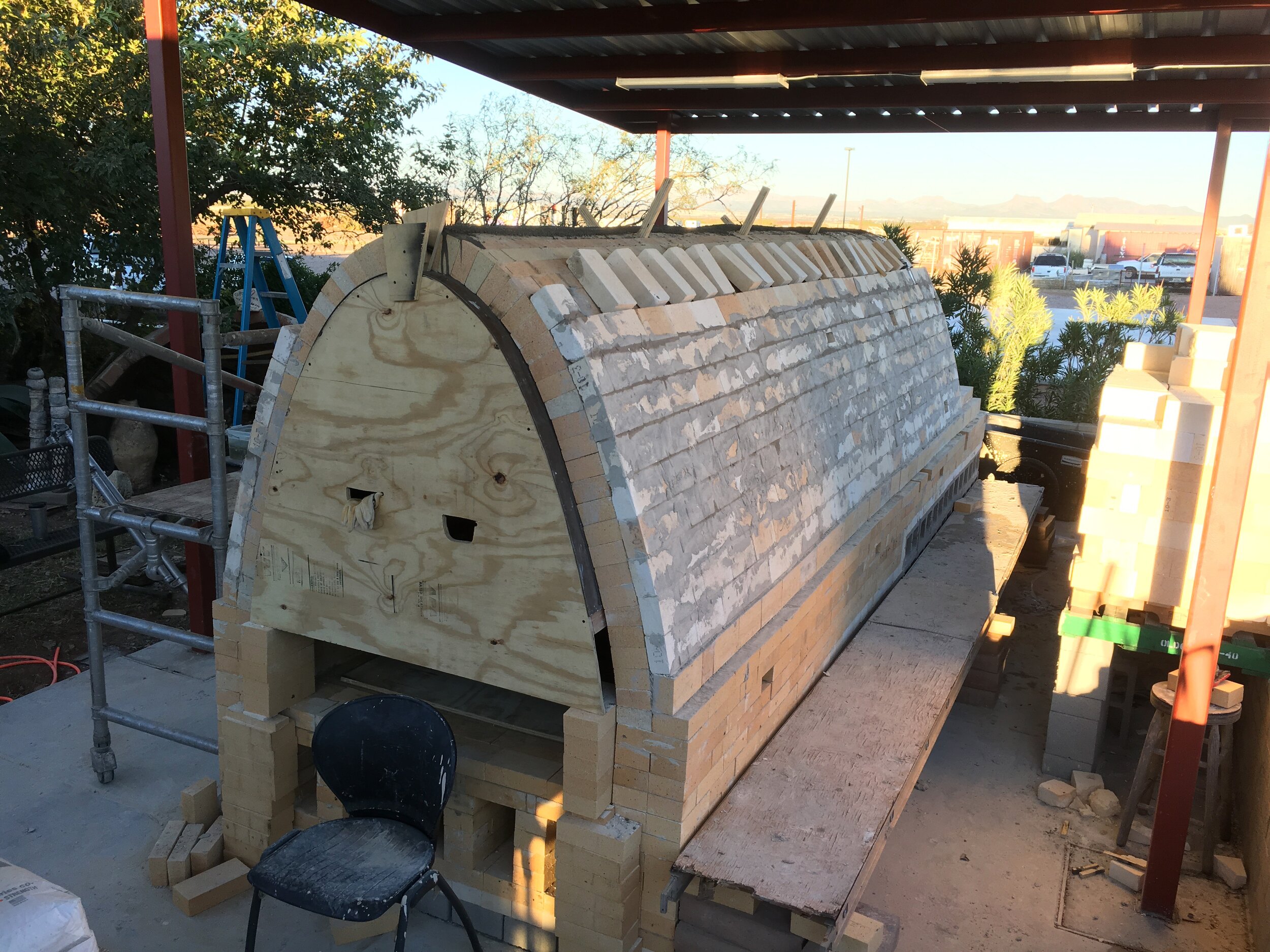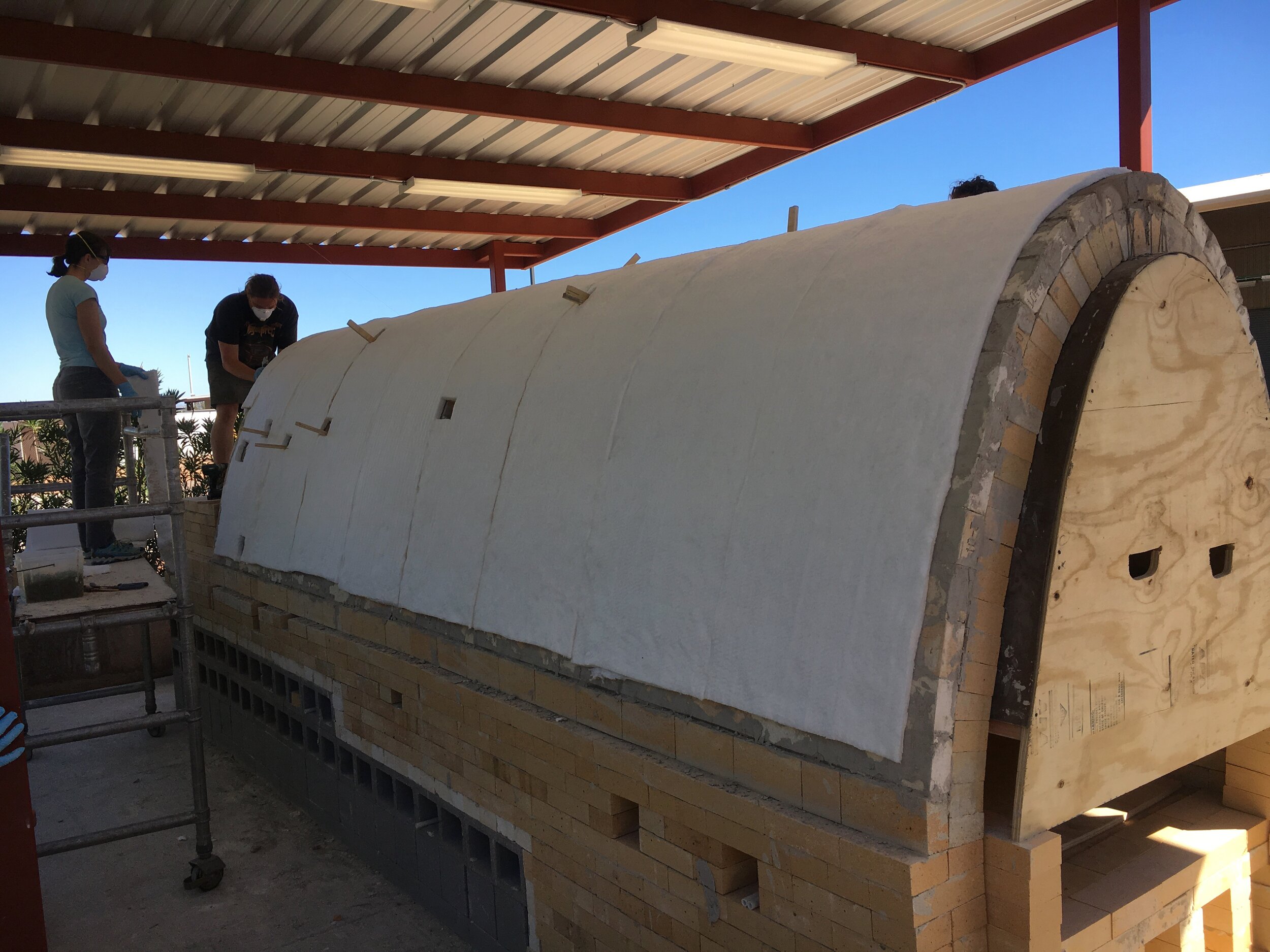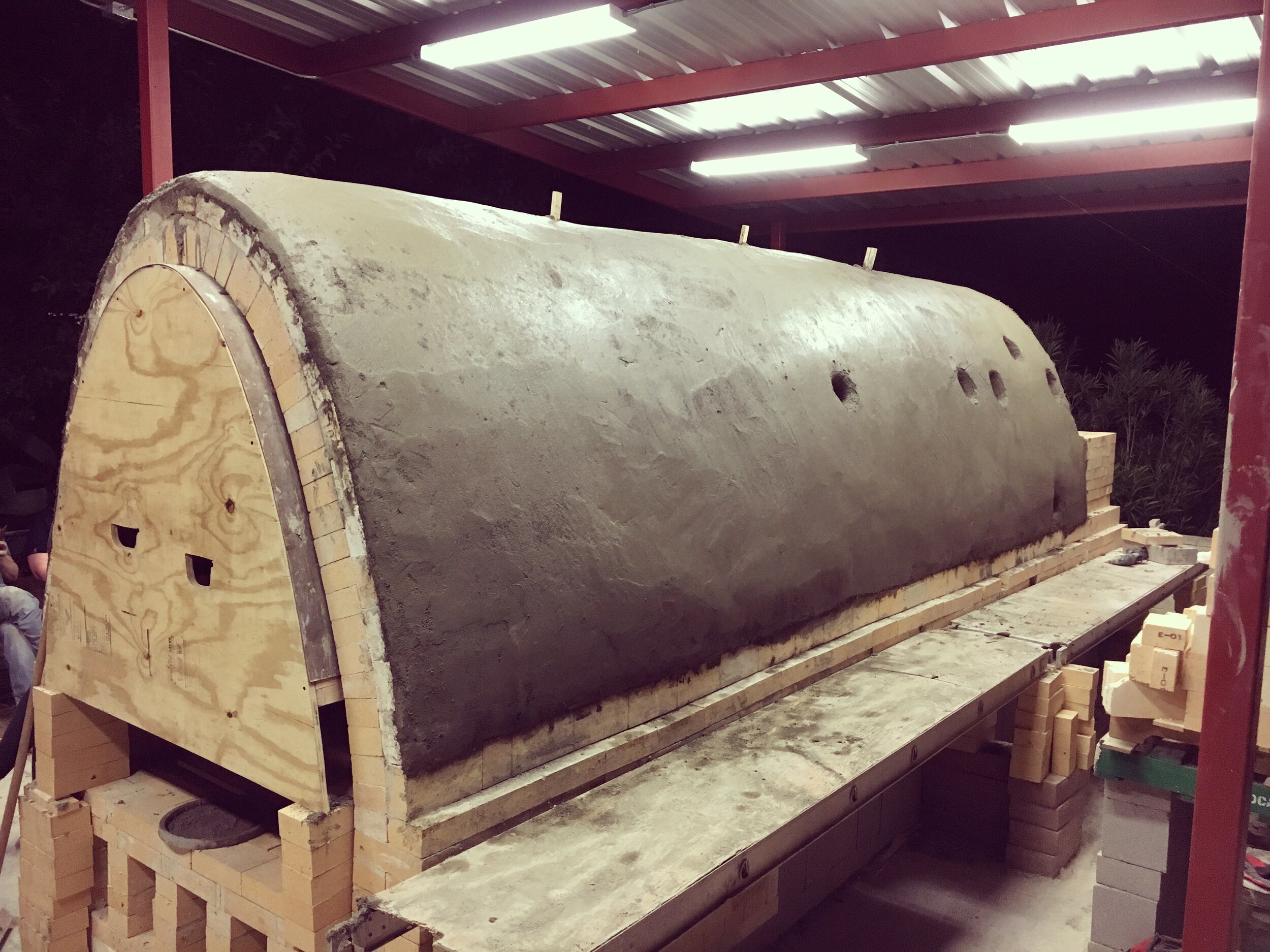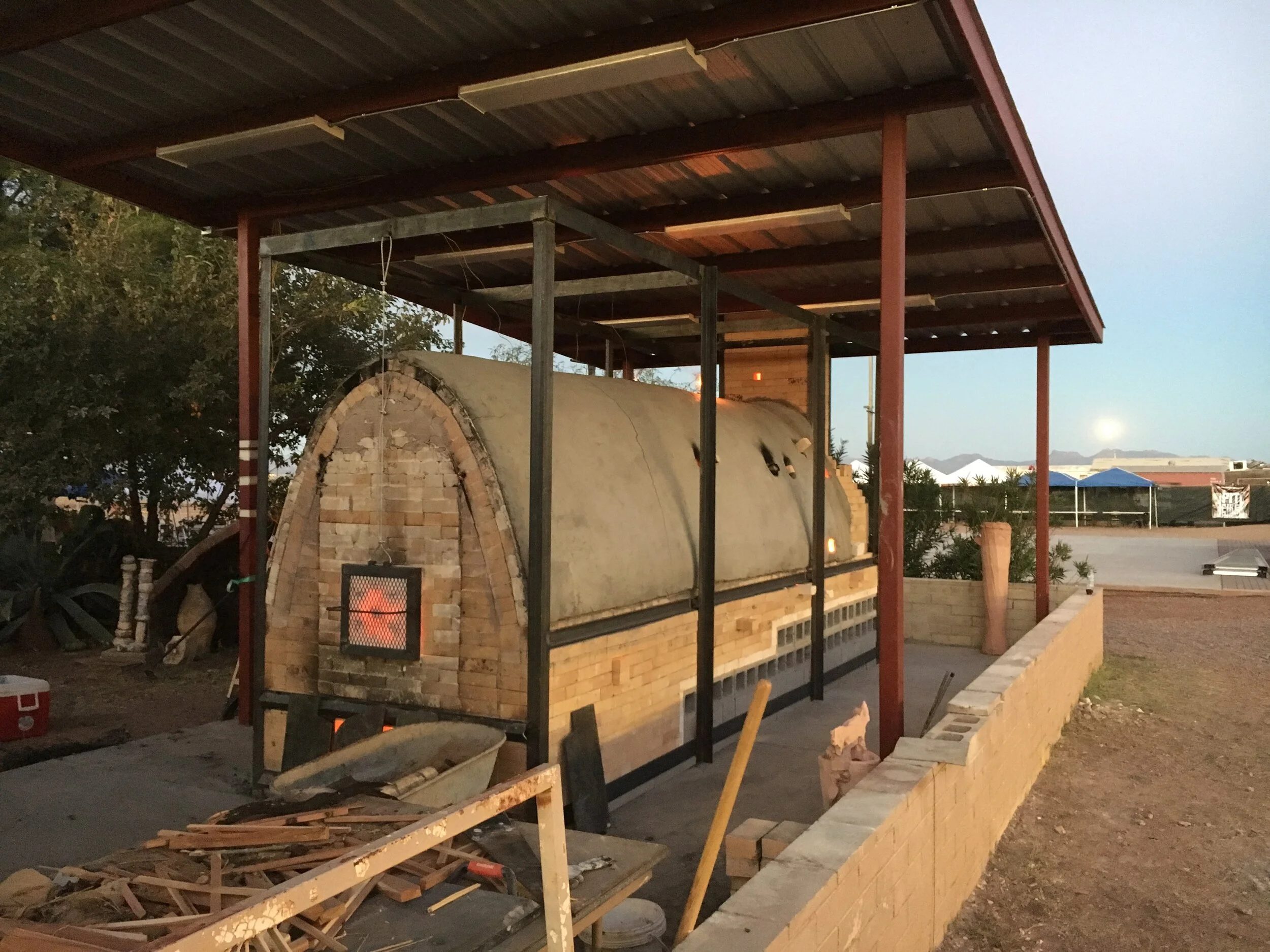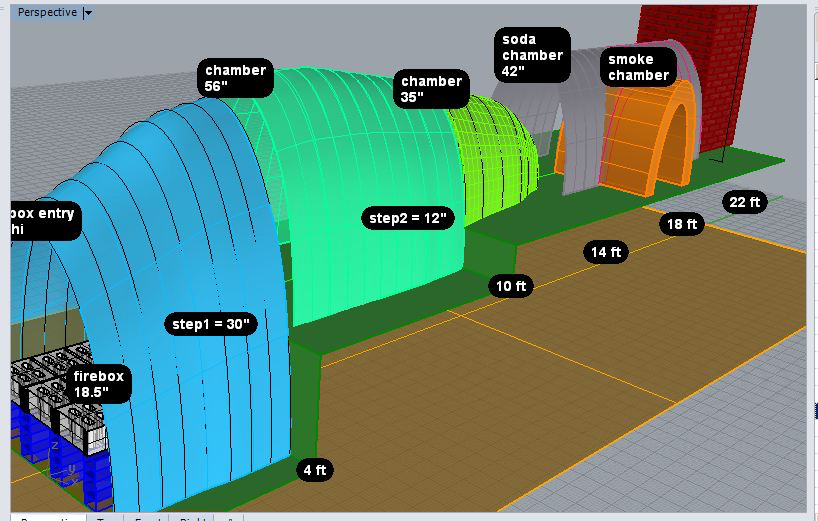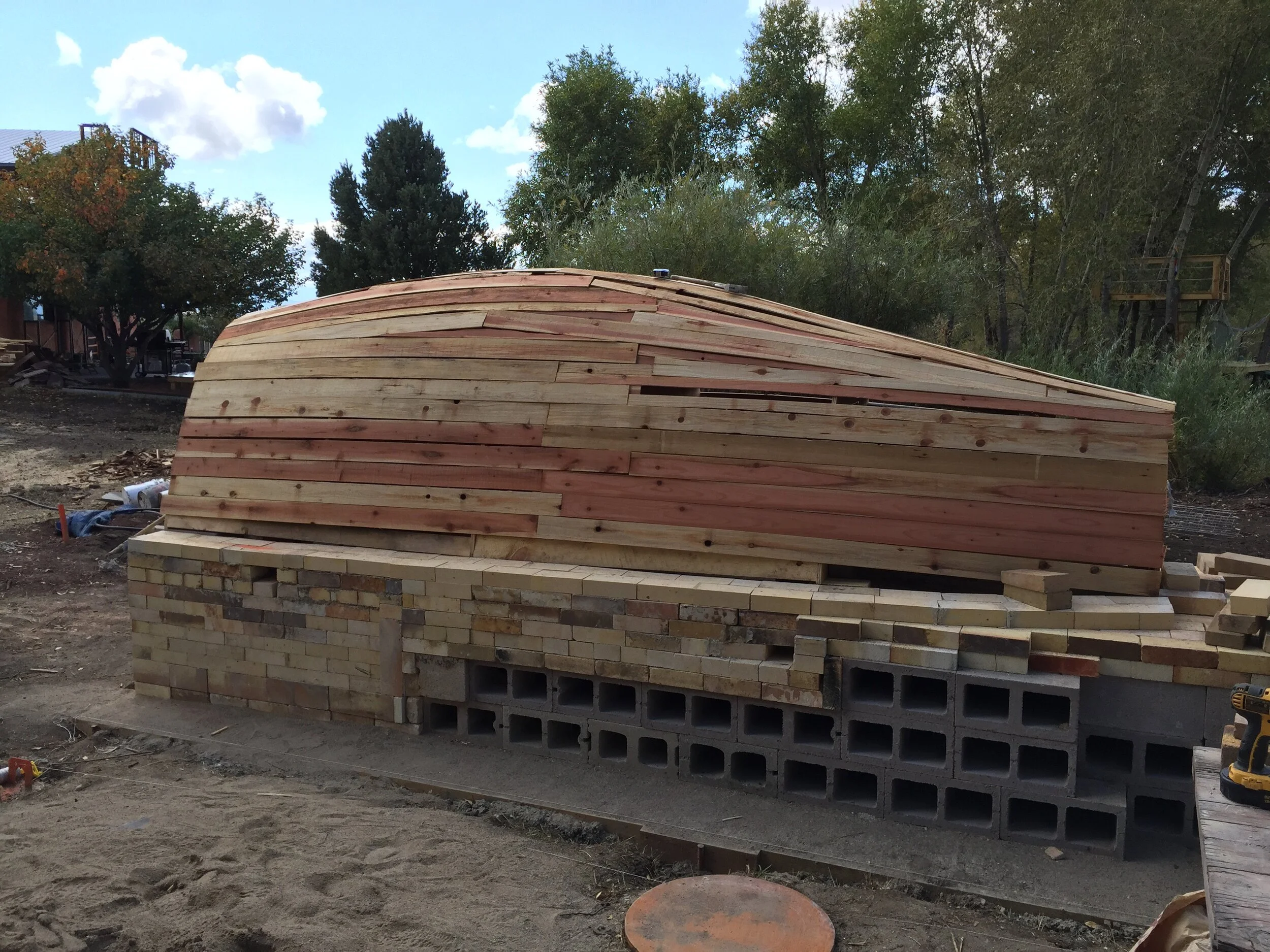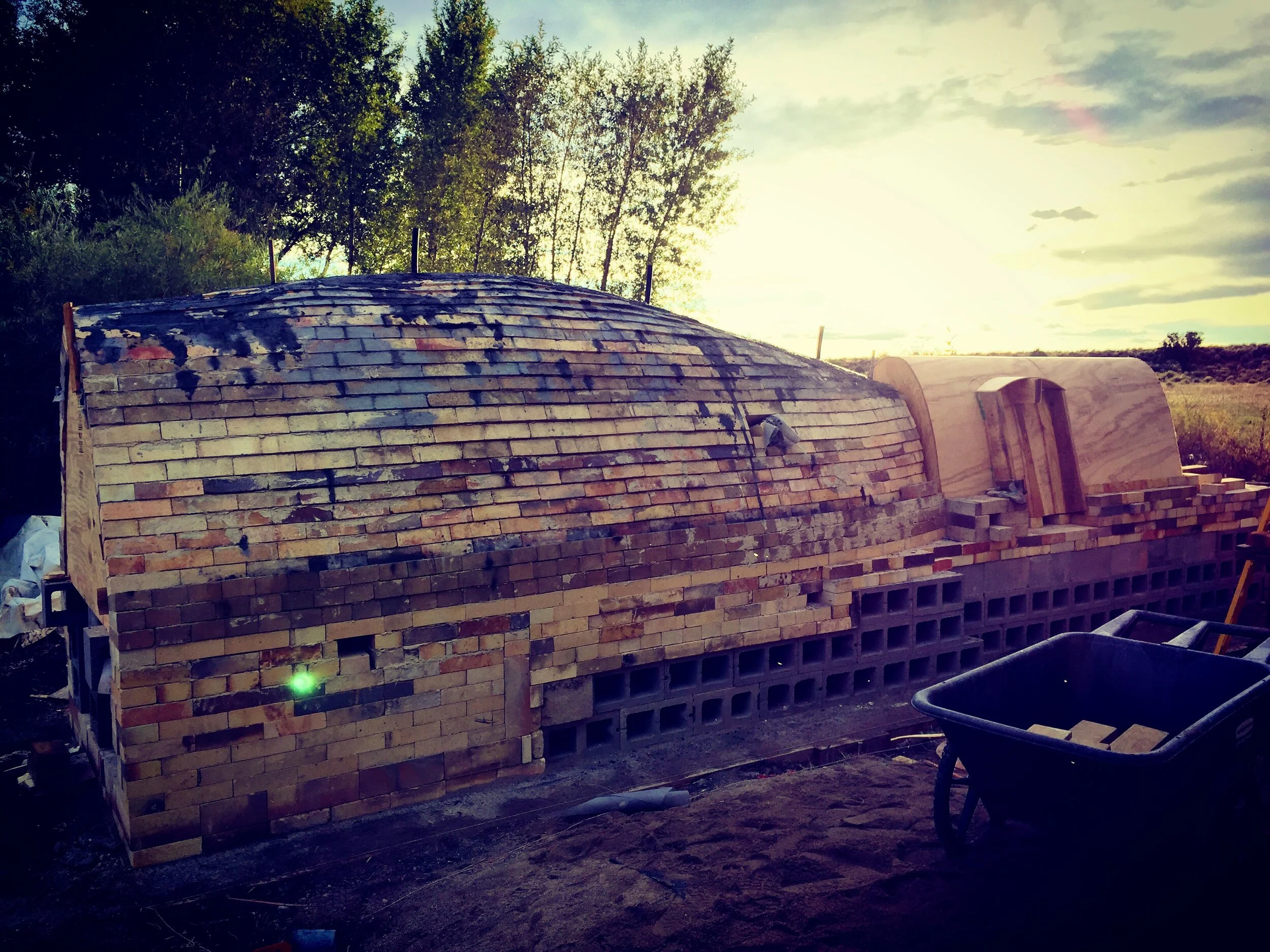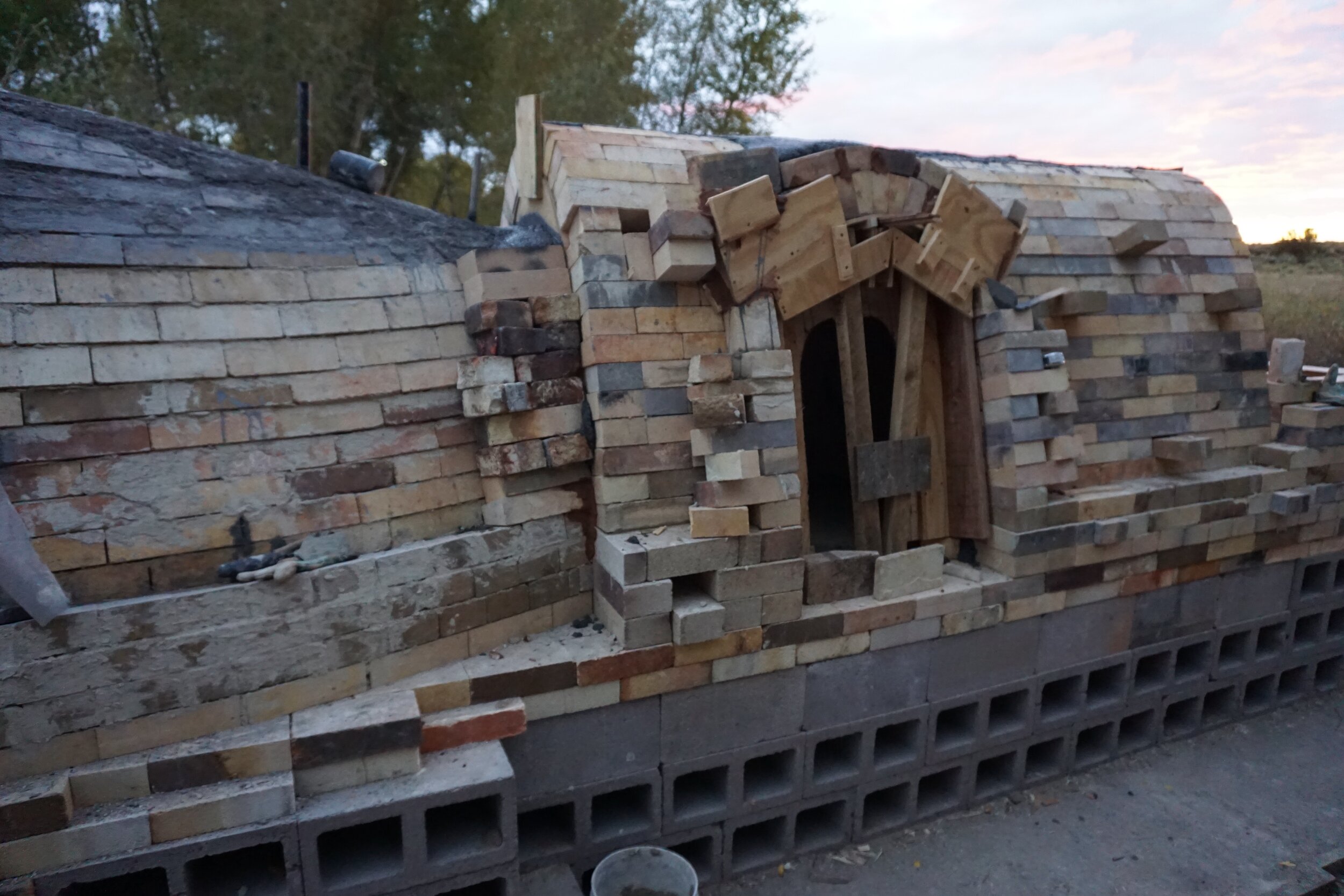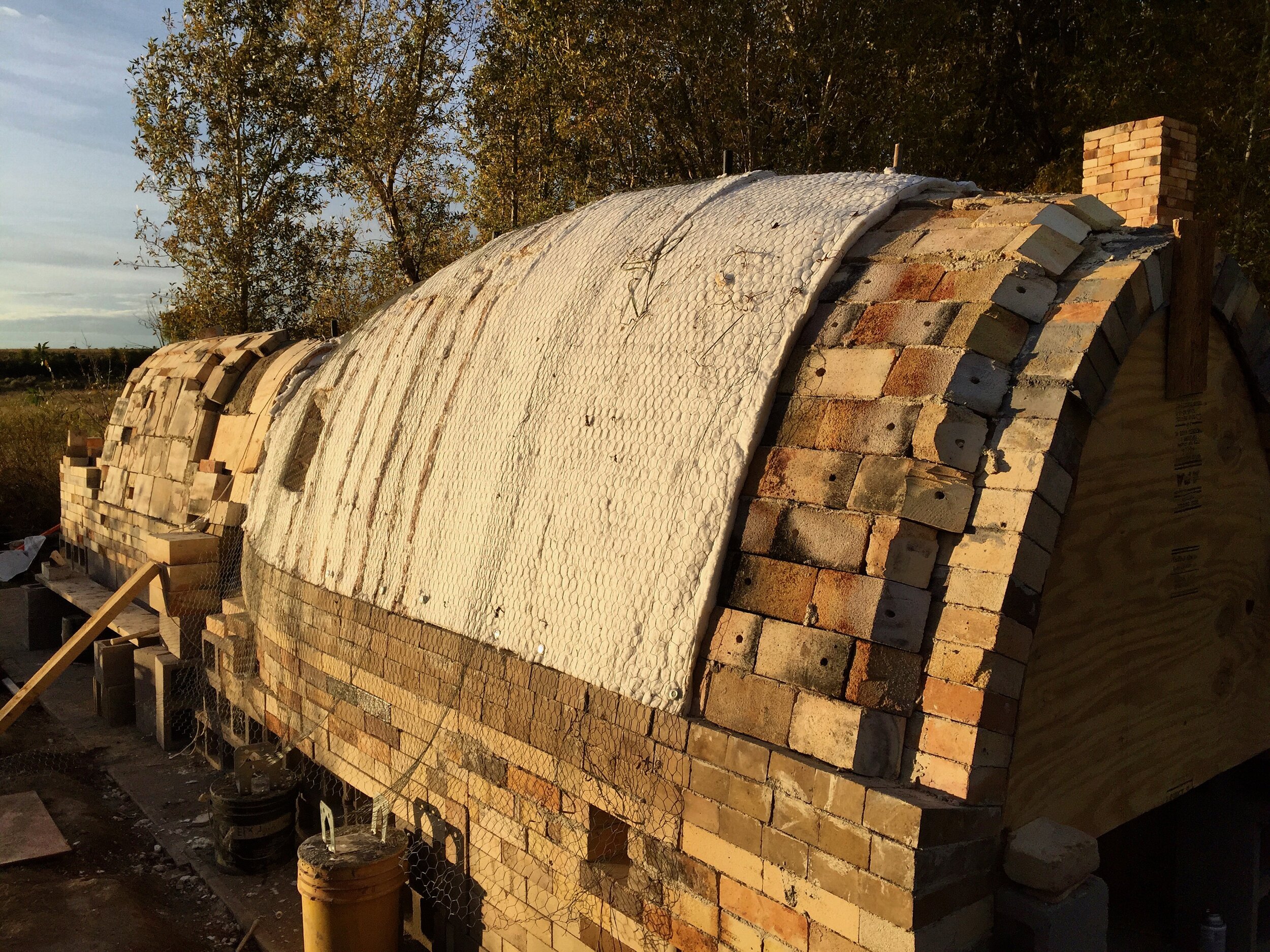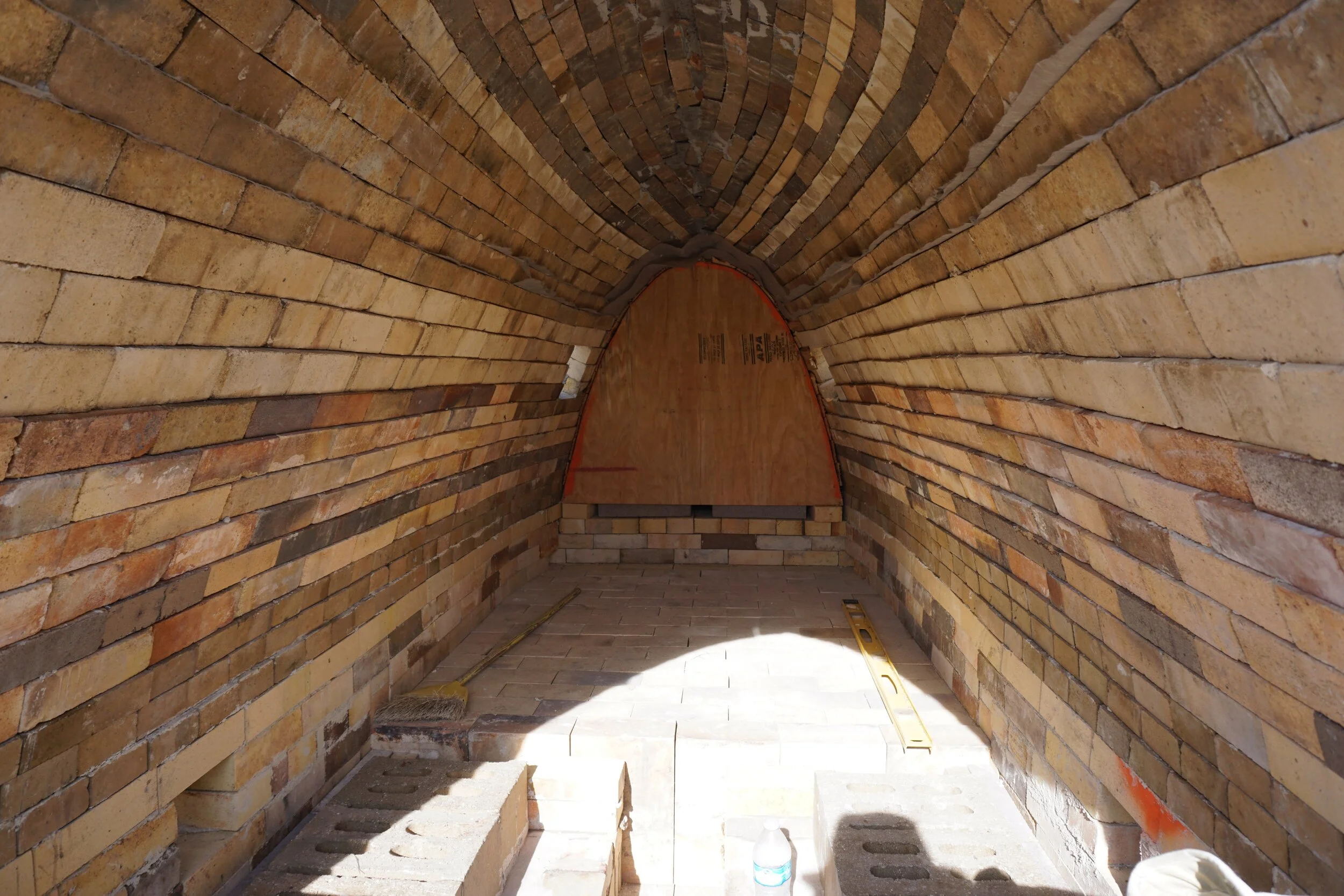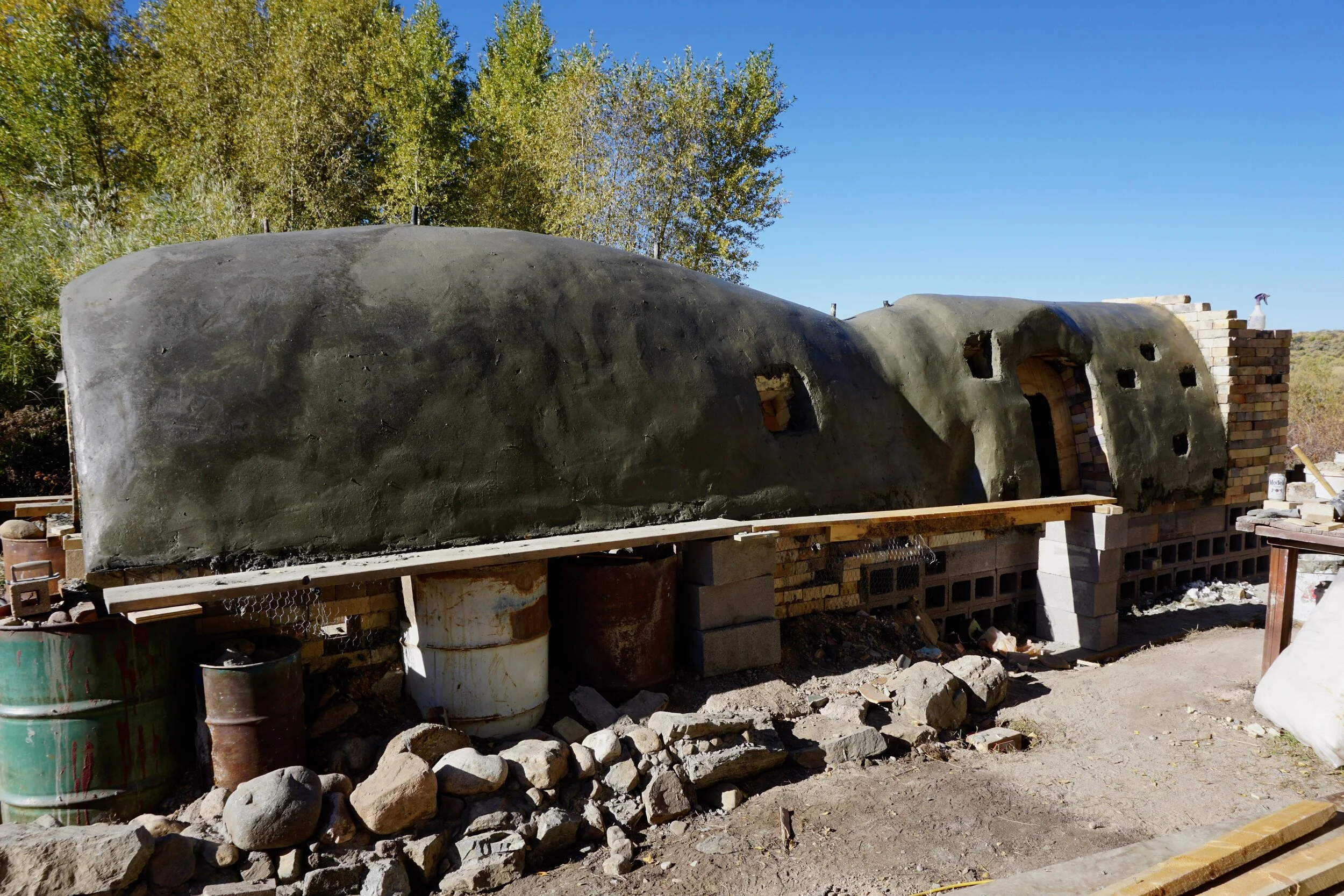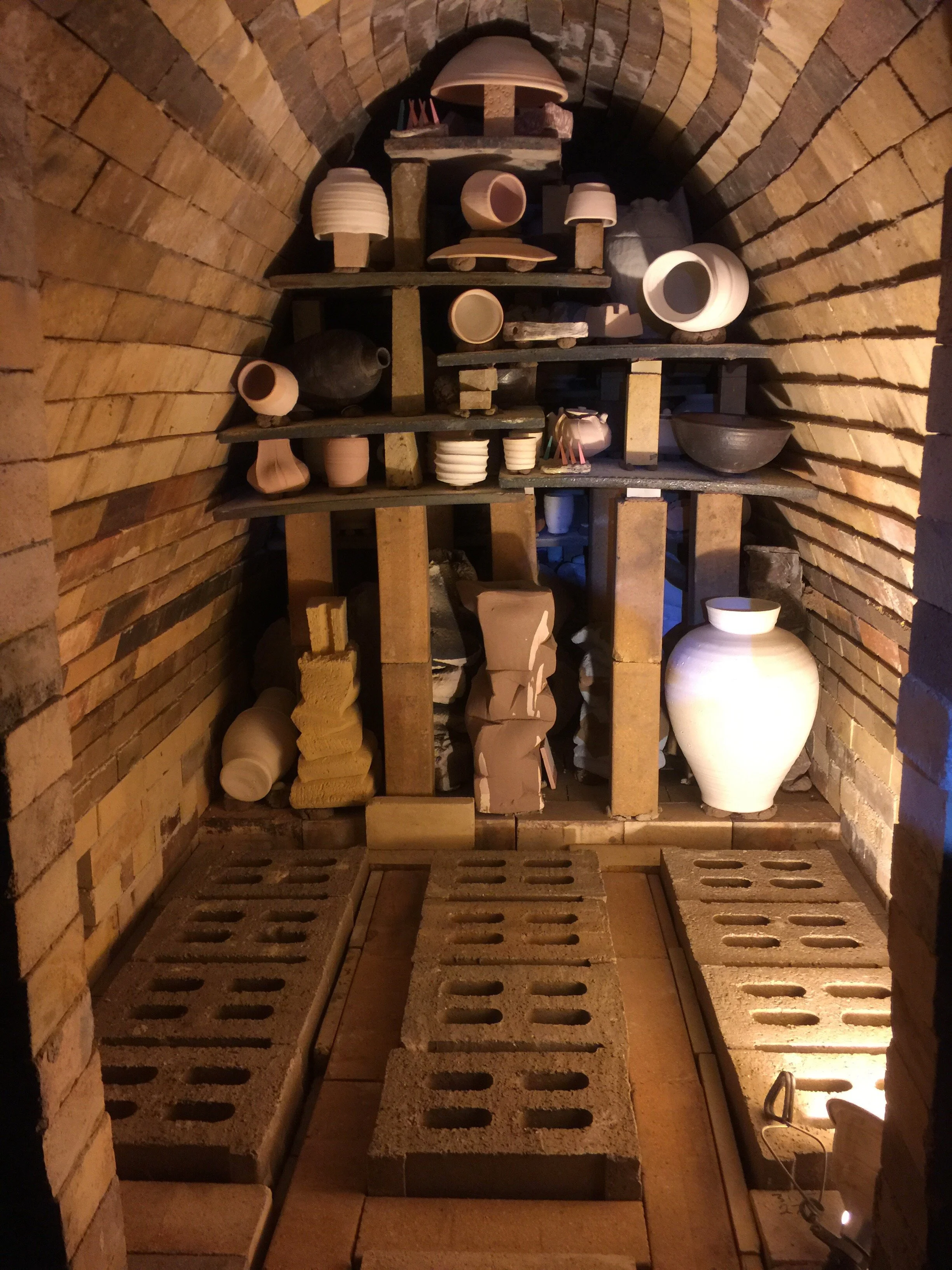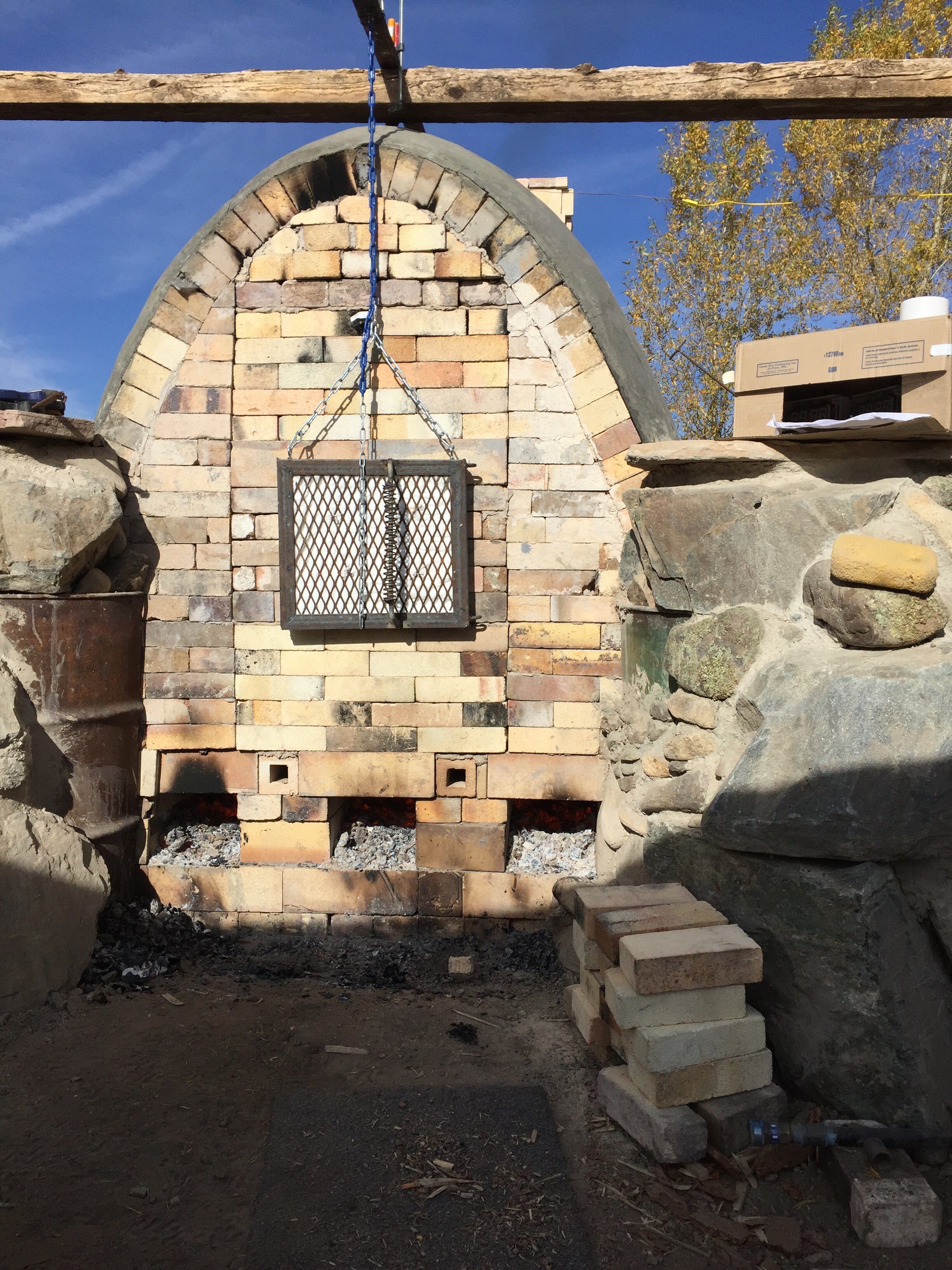Kiln Building
Building a kiln is a very complex process that requires extensive planning, careful material acquisition, carpentry techniques, welding skills, masonry experience, a bit of engineering, flow calculations, realistic work load quantities, consideration into firing assistance, and overall lots of patience. My full complete custom kilns range in cost $750-$1,250 per cu/ft (typically kilns range from $35k-$90k depending on size, and location), including design, refractory materials, construction materials, labor, accommodations, travel arrangements, freight, gas power burners (if required), etc. Most kilns are in the 30-300 cu/ft stackable space range, and the cost per cu/ft goes down as the size goes up. The “client” is responsible for a suitable kiln site, any electrical needs, gas line plumbing (if gas burners are to be installed), and any permits that may be necessary. I take care of everything else from the first material gathered, to cleanup of the completed kiln site. This allows my crew and I to build the very best kiln available, using high quality refractory materials, in a timely fashion for a price less than you can buy a kiln elsewhere. I am scheduling kiln builds for 2026, currently I have 2-3 build slots available. Lead times on certain materials can be 2-6 months, so please plan accordingly if you’d like me to build a kiln for you.
I only build atmospheric kilns with Super Duty High Alumina brick so your kiln lasts longer than any other kiln on the market. Every kiln I build is 2 layers brick, 9” thick walls, fiber insulation, coated with a stucco skin coat for protection. I use 3/16”-1/4” mild steel for framing so your new kiln won’t move with each firing, and the integrity of your arch will not be compromised. I use small gaps throughout the kiln in key areas to allow the kiln to expand the first firing, along with proper arch load support via bricklaying and steel reinforcement so your kiln will retain the structural integrity from which it was built. I’ve spent the past 26+ years building kilns ranging in size from 15 cu/ft up to 500 cu/ft, and all are still in use with no structural failures reported.
Most of the problems people have with kilns are because a “short cut” was taken somewhere during the planning/building process. Building with used, free brick seems like a cost saving idea at first, though after a few firings when the bricks begin to fail you realize all the time invested is a complete waste, not to mention the increased labor time and difficulty involved in building with used, non-standard sized brick. I do not build with used brick, nor do I recommend building with used brick. Improper air flow calculations lead to kilns that are difficult, or impossible to heat to the desired temperature. Power burners are more expensive than their cheaper Venturi alternative, but when firing time and kiln size are considered, power burners are the best, most cost effective option. Undersize fireboxes in wood kilns are quite often designed to allow more space for art work, though this poses a significant challenge firing the kiln to temperature. Have you made or experienced any of these problems when firing a kiln? Likely your experience with a difficult kiln is due to any of the above circumstances, and now is the time to have a professionally designed, and constructed kiln. I’ve solved all of these problems with my 26+ years spent researching kiln design and construction techniques, and I’d be thrilled to build your new kiln for you.
3 Unique Kiln Designs
The Kiln is a vital part of a ceramic artists creative process, and when properly built should last for hundreds of firings. All too often kilns are poorly designed, too large, too small, inadequately insulated, inefficient, and fail prematurely due to improper support and/or inferior bricks. I’ve built many kilns, repaired even more, and have designed 3 different types of kilns I feel are the best choices for ceramic artists utilizing atmospheric firing techniques. Furthermore, I have each of these kilns at my studio for clients to participate in a workshop firing. This enables the artist to take each kiln for a “test drive” prior to making a decision as to which they would like to build.
The 30 cu/ft catenary arch cross draft hybrid gas/wood/soda kiln is the “go to” design for most everyone. The right size for an individual body of work, or a small group firing with a “stackable” space of around 24 cu ft. The catenary arch is the strongest, longest lasting arch, easy to build, load, and fire, this truly is the most versatile kiln. Have a look at the “hybrid gas/wood/soda kiln Pelham, NC” for a photo set of this kiln design. All of my work from 2017-2019 was fired in this style kiln as it was the first kiln I built after moving to Colorado.
The tube kiln emulates effects from “anagama” style kilns, yet is much easier to build, load, and fire. Appropriately sized with 60 cu/ft of “stackable” space (about 100 cu/ft total interior space), this kiln is perfect for a small group, can be fired quickly, or stoke it a bit longer for some heavy ash buildup, and dramatic flame path markings. “Tube Anagama Kiln Pine Bush, NY”
The 160 cu/ft of “stackable” space anagama is my personal favorite, and a truly special style of wood burning kiln. Tapered kilns can provide the most dramatic of wood fired “effects”, heat incredibly evenly, produce the most melted ash from the wood burned, and are the most challenging to build, load, and fire. My “afterburner” chamber designed into the rear of the anagama can eliminate most, if not all of the smoke from the chimney depending on the type of wood being used, and how the kiln is fired. You can view firing videos of the “first version” of the “Afterburner Anagama” on the process page contained on this website.
Kiln Consulting
I’ve been firing wood burning kilns of all shapes and sizes for over 26 years across the globe. Each kiln has taught me things that I’ve incorporated into every successive firing and kiln build. My specialty is producing “slow flame” kilns that heat evenly, and smoke very little to not at all. I’ve spent countless hours designing all components, specifically the exit flues, to produce kilns that require less fuel to heat, yield more ash from less wood, require less physical work, and are more responsive to adjustments that more “traditional” kiln designs. If your kiln is not performing as it should, contact me for a full “assessment”. I’ll calculate airflow, fuel usage, heat saturation, and firing schedule to help you adjust your air flow so your kiln heats more efficiently, and evenly. The most common package is $250/4hrs, and can be purchased in the “Store” or by clicking here.
I can provide guidance for your kiln firings, kiln build, or you can hire me to come build your kiln for you. The timeline has many variables, mainly how well you prepare the build site with materials at hand. Small kilns can be built in 7 days, while larger kilns can take up to 4 weeks to complete. It is best to start organizing your project at least 4 months in advance to allow adequate time for travel arrangements, and material deliveries. I make myself available to travel for 4-6 kiln builds per year, contact me directly for information about your potential kiln project. Custom kiln photo sets can be viewed by clicking on a link on the left side of the page, below the main menu column.
I do not provide “layer by layer” kiln drawn plans. If you need “layer by layer”/“how to build a kiln” type of plans, you are likely not qualified to build a safe operating kiln. A kiln can be dangerous if it not structurally sound, and one needs several kiln building experiences before one is capable of properly building a kiln. If you feel you are capable of building a kiln, yet don’t want to pay for any help, you should be able to figure most everything out by reviewing the hundreds of photos on my website showing kiln construction. If you feel you can build a kiln, yet need some help to get started or along the way, I can be your consultant. Basic planning, slab prep, shed conversations, gas supply specs, kiln measurements, footprint measurements, material notes, and material calculations are the most common needs costing around $500 in consultation fees. I can provide dimensional drawings, full spreadsheet material lists, arrange your refractory order, provide any additional photos or drawings during the build process, be available for phone calls, video calls, on location help, initial brick layup, welding the frame, etc. Kiln consultation packages are available in the “Store” on this website, or by clicking here.

